EXTREMELY RARE! WWII SECRET 1944 Truck (Operation Hailstone) & Satawan Ponape Headquarters of the Commander in Chief Military Intelligence Report
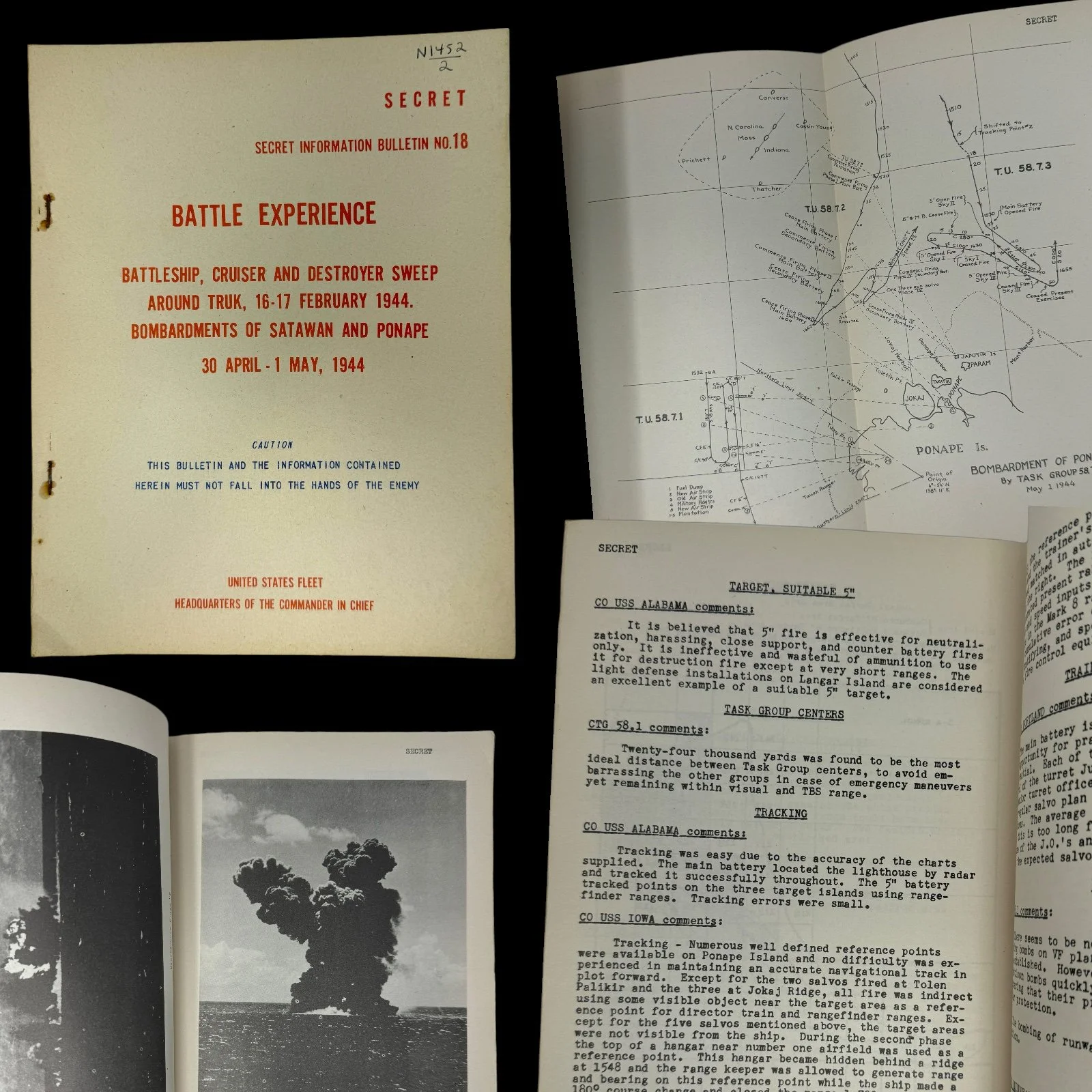
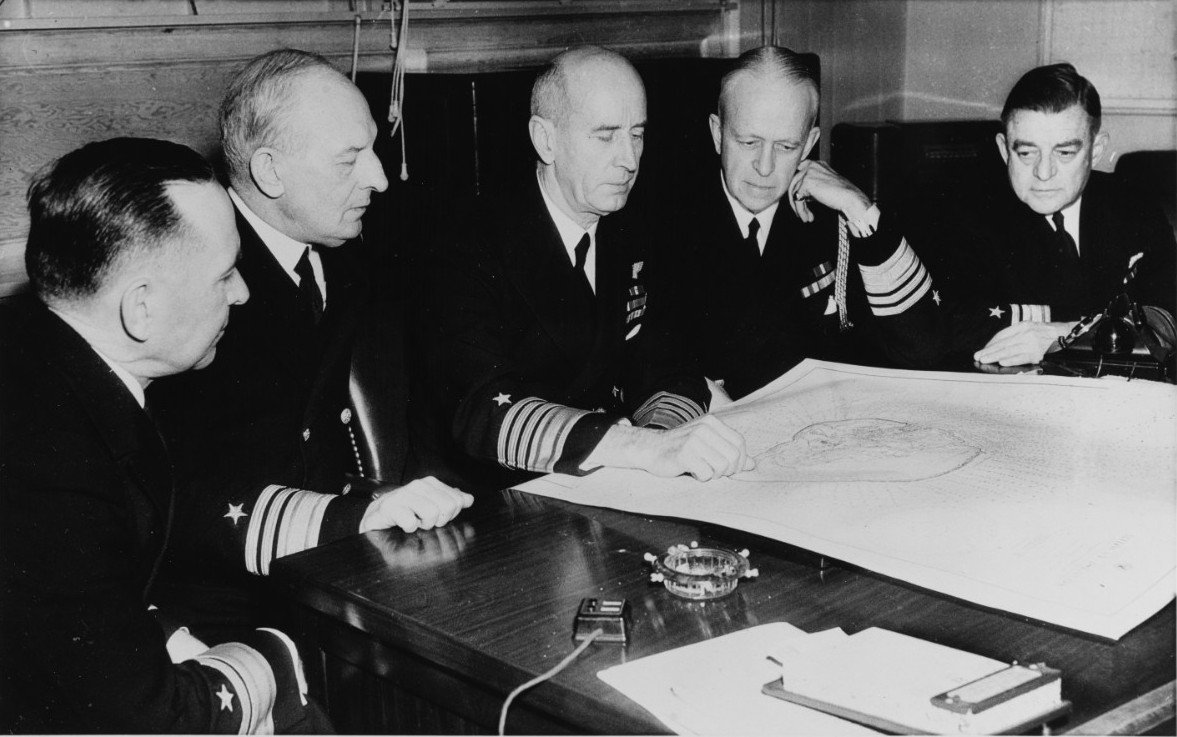
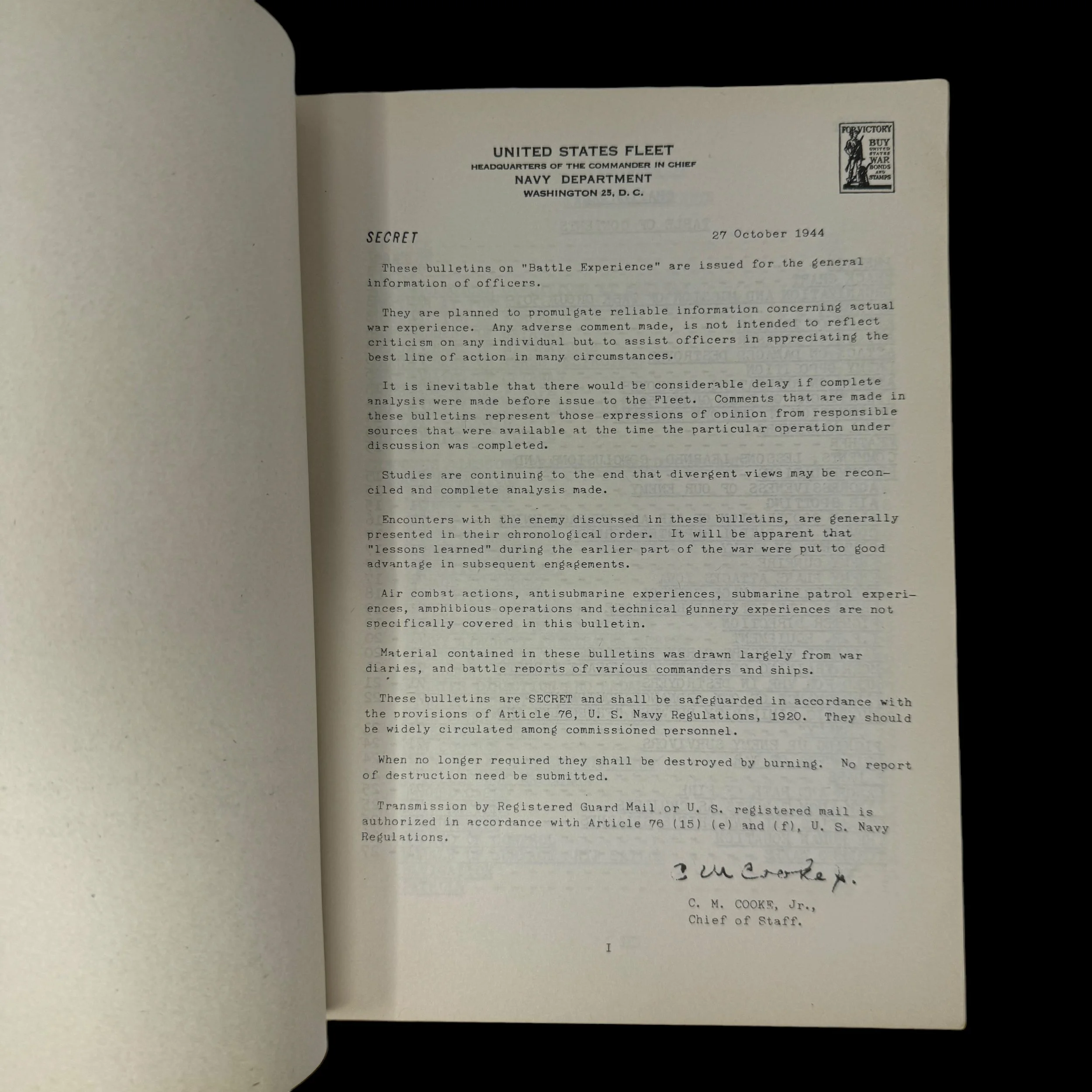
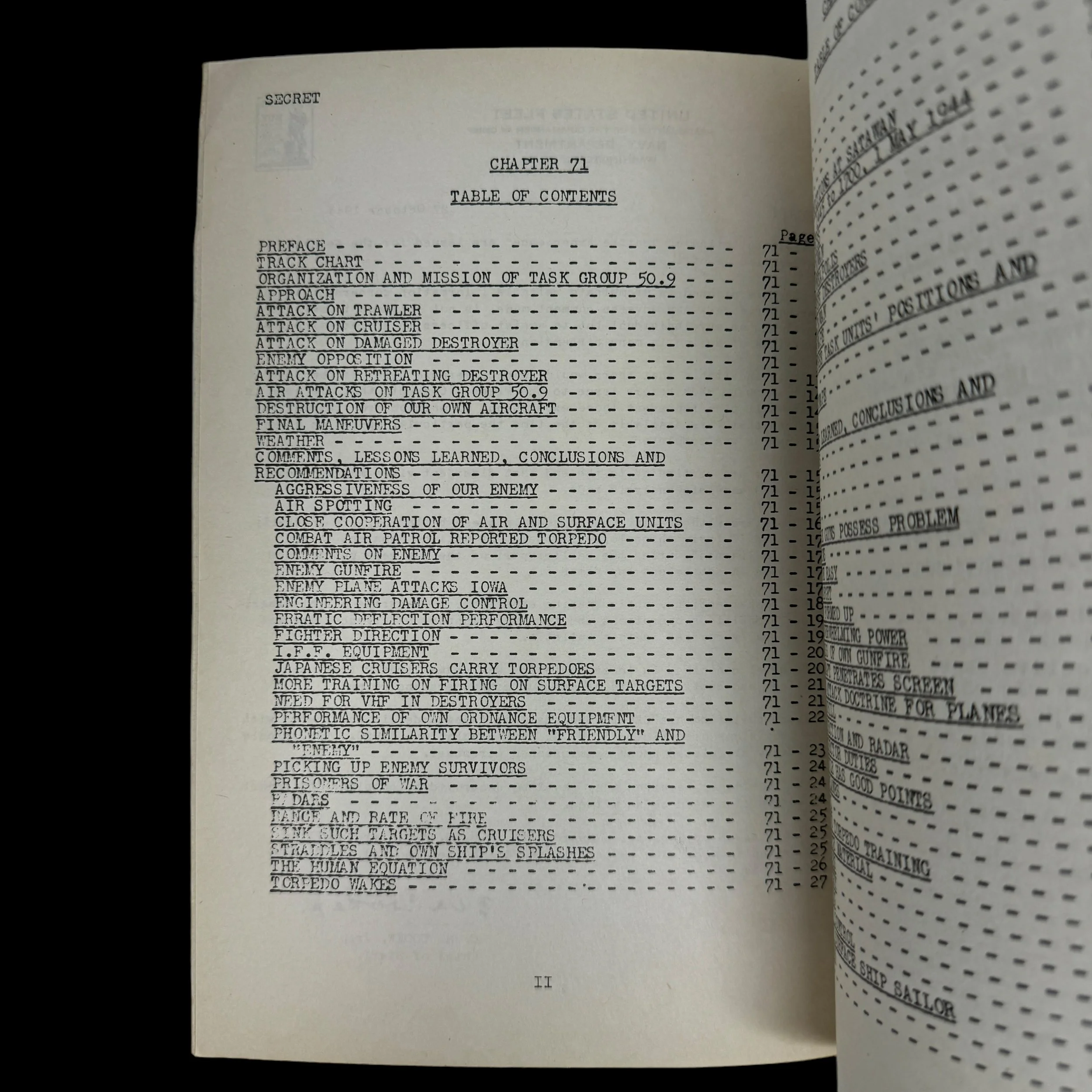
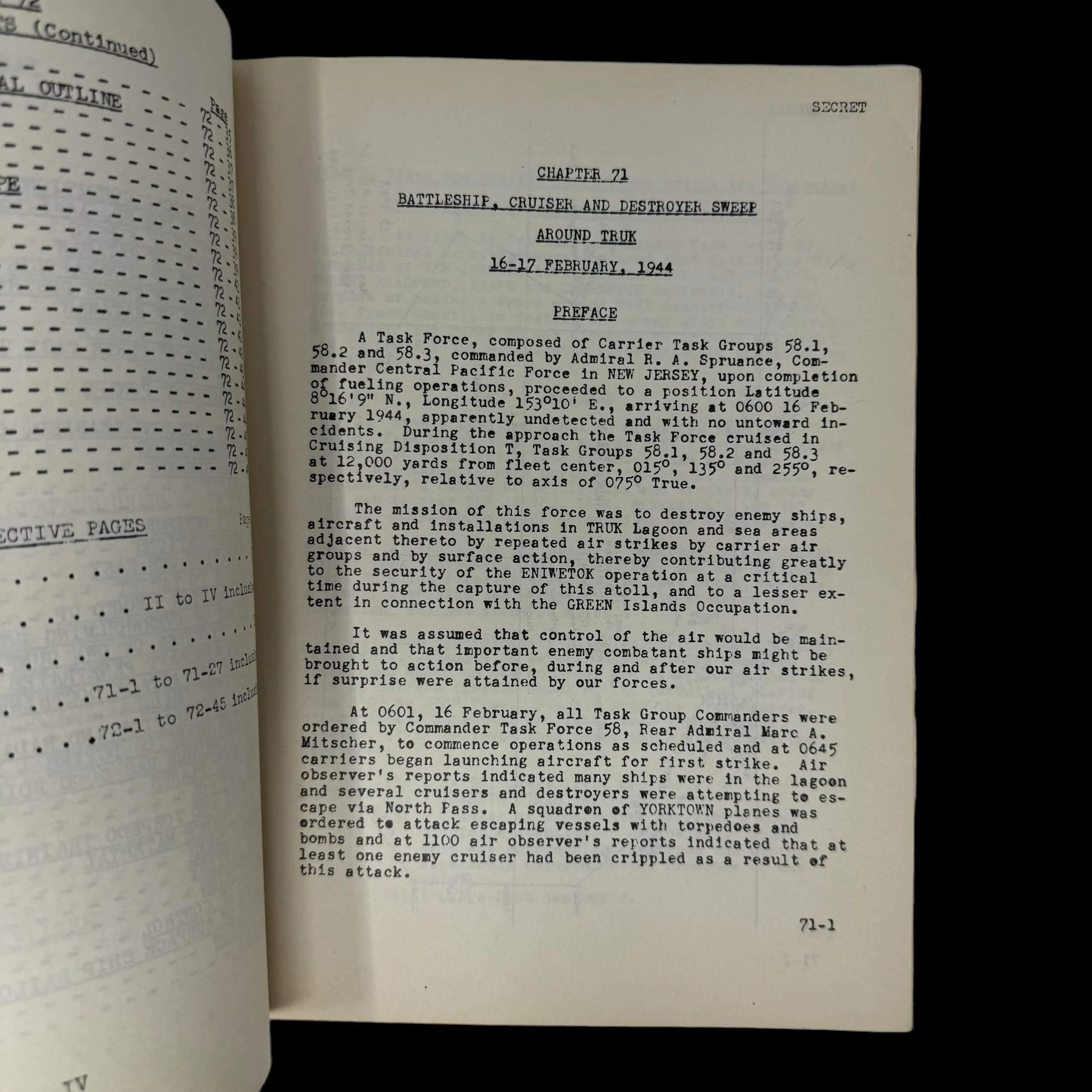
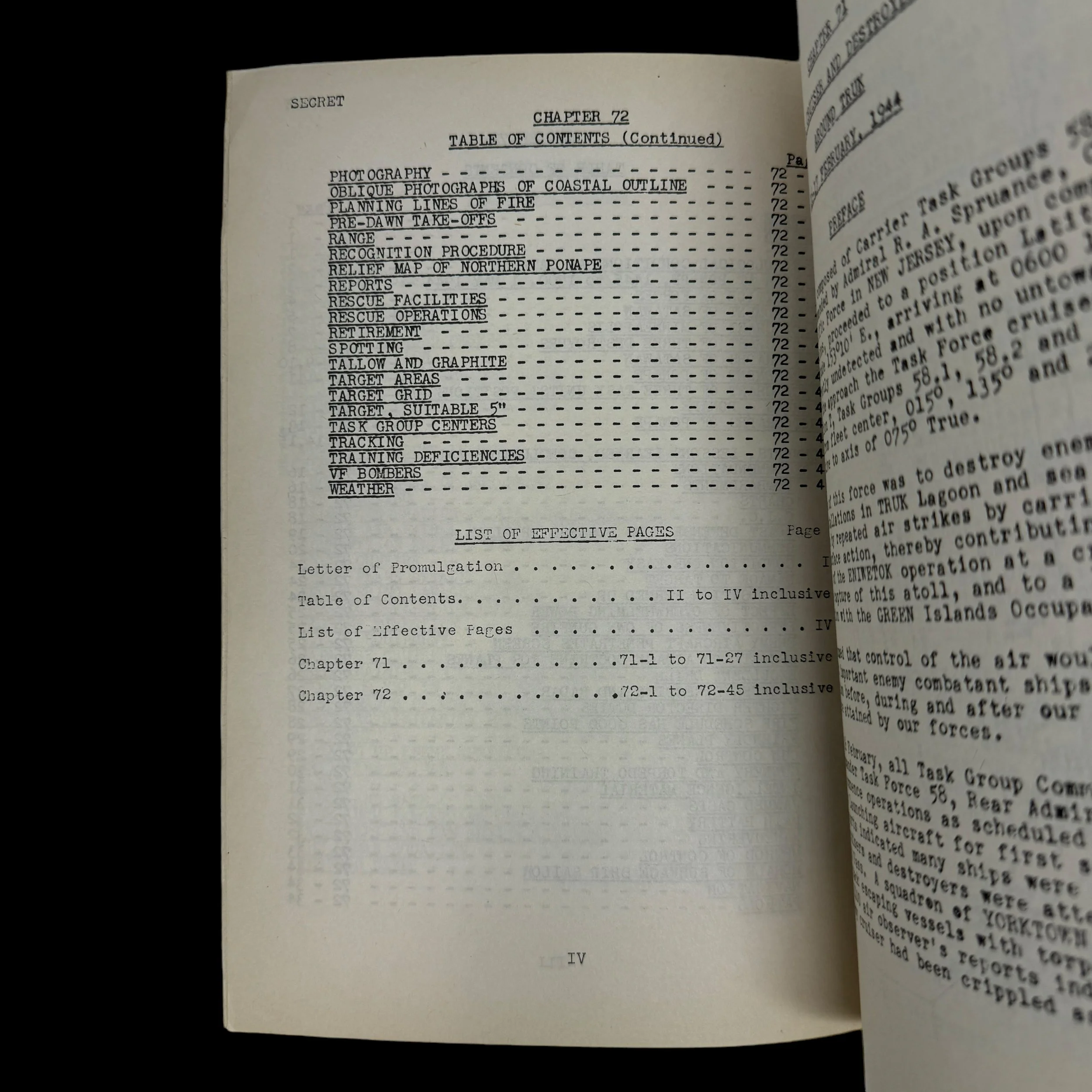
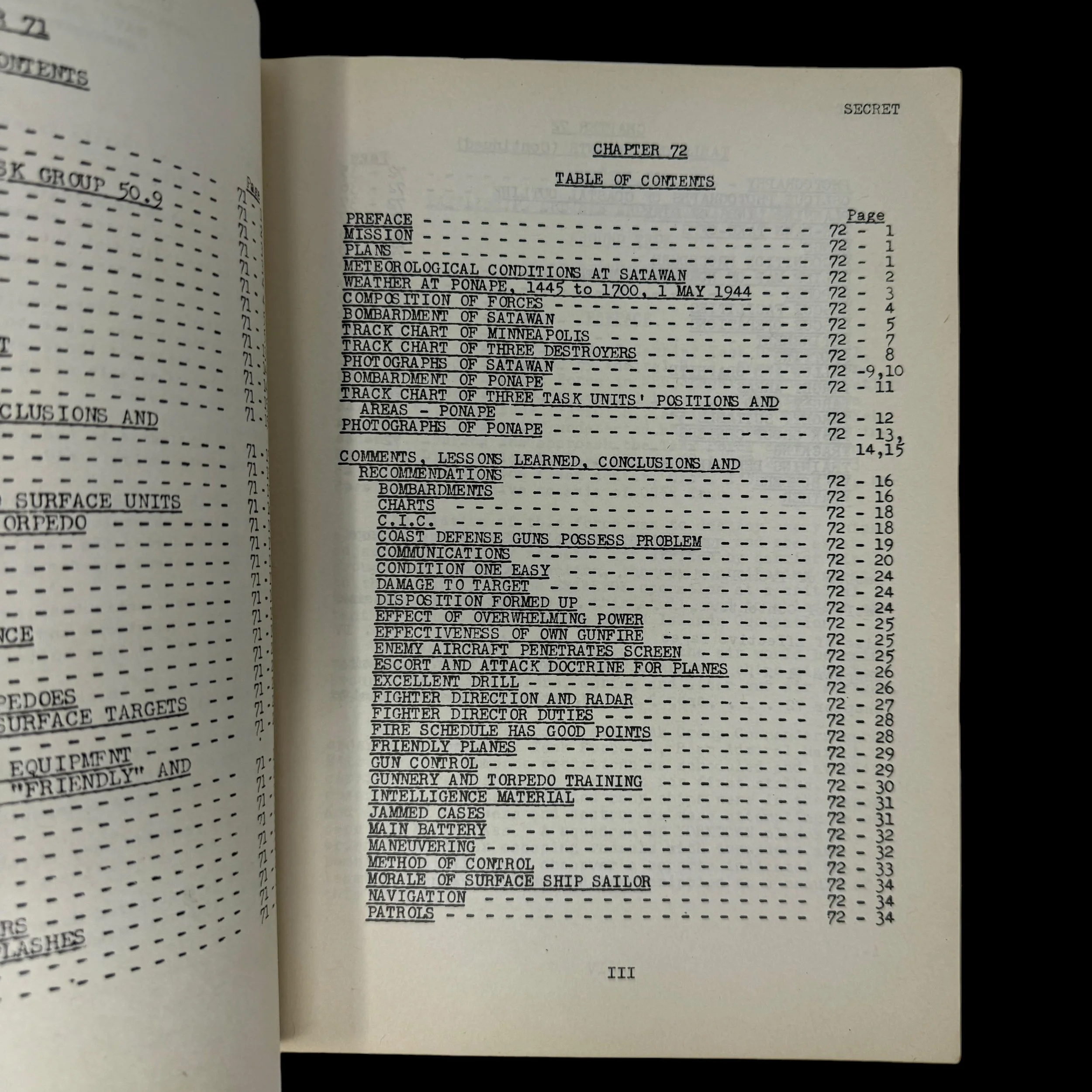
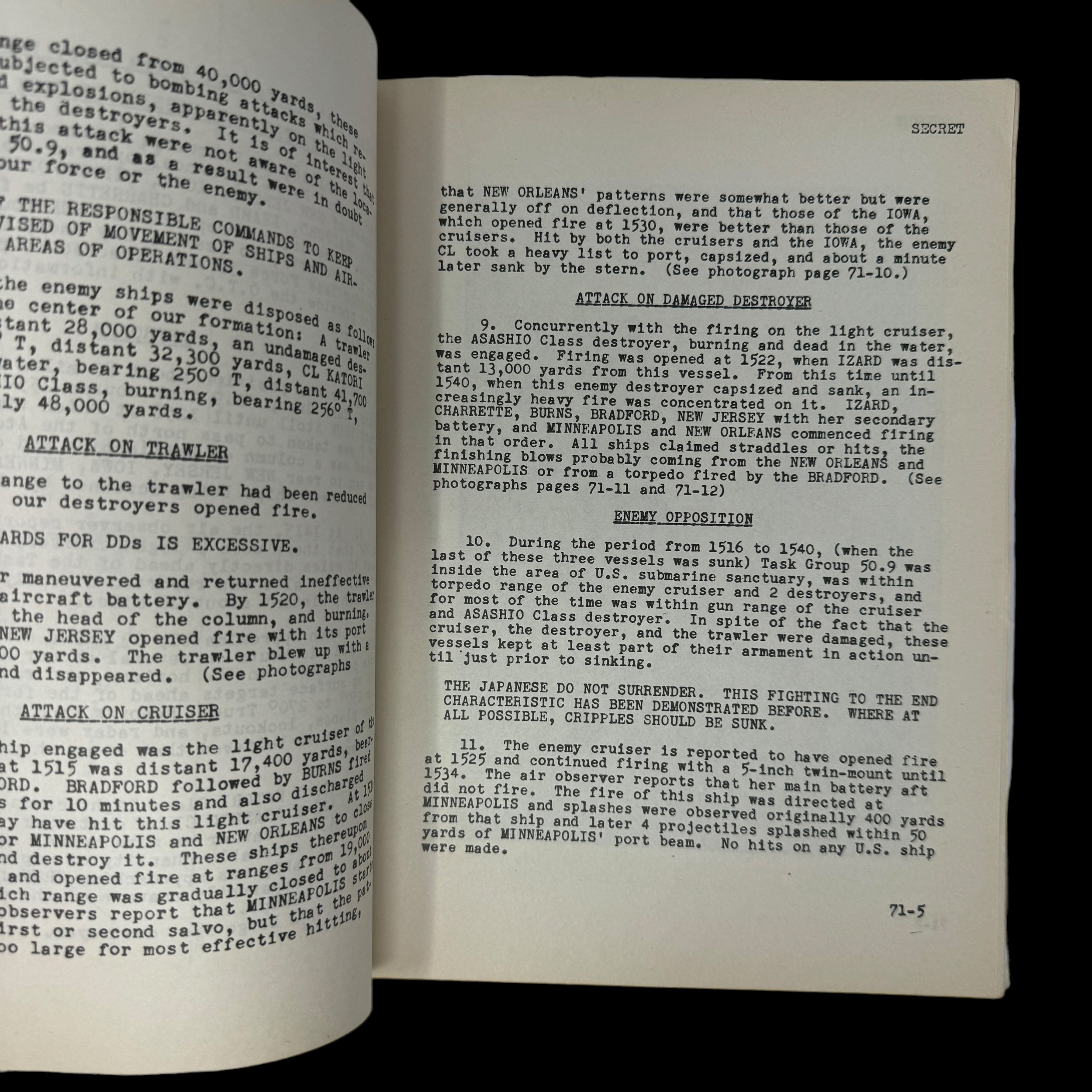

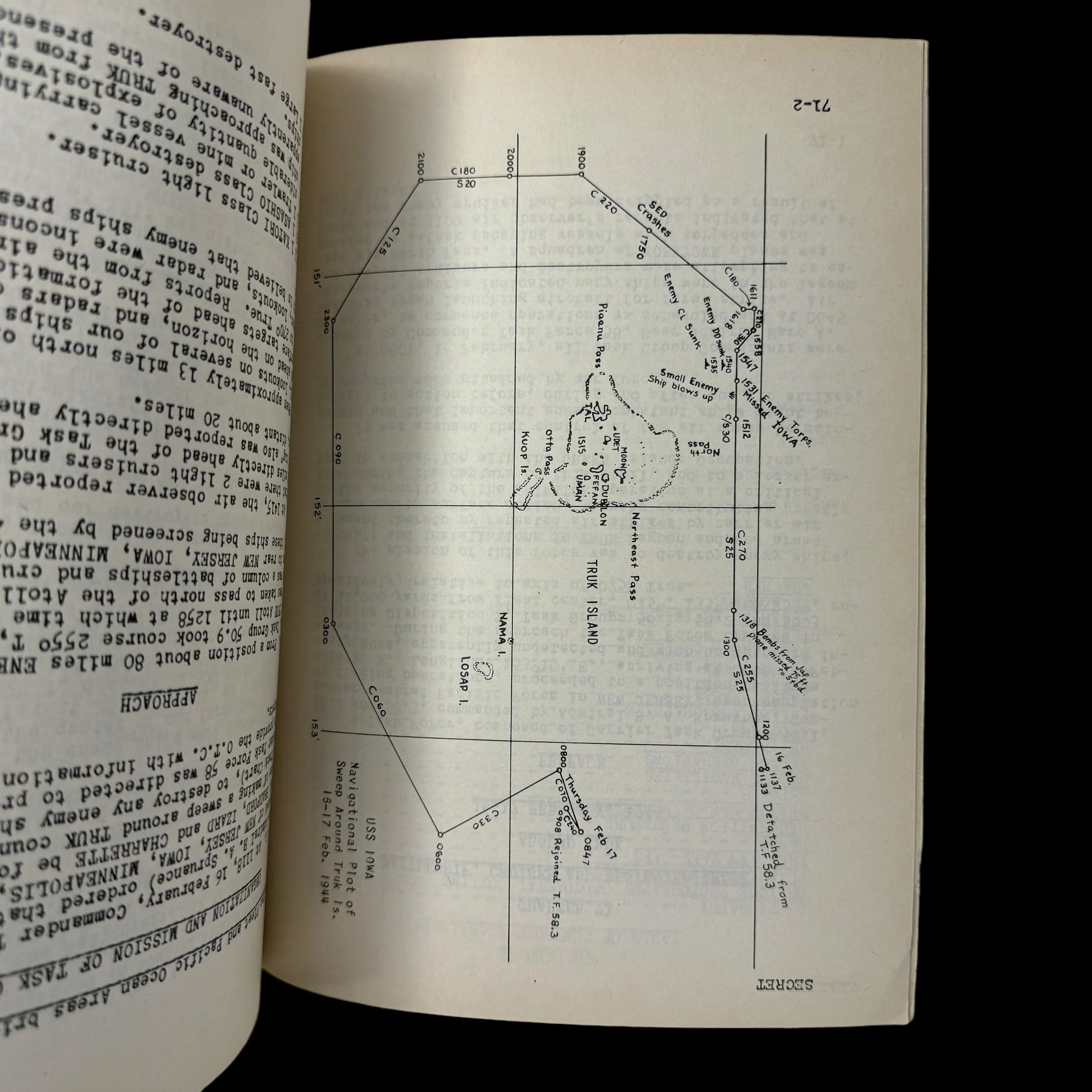
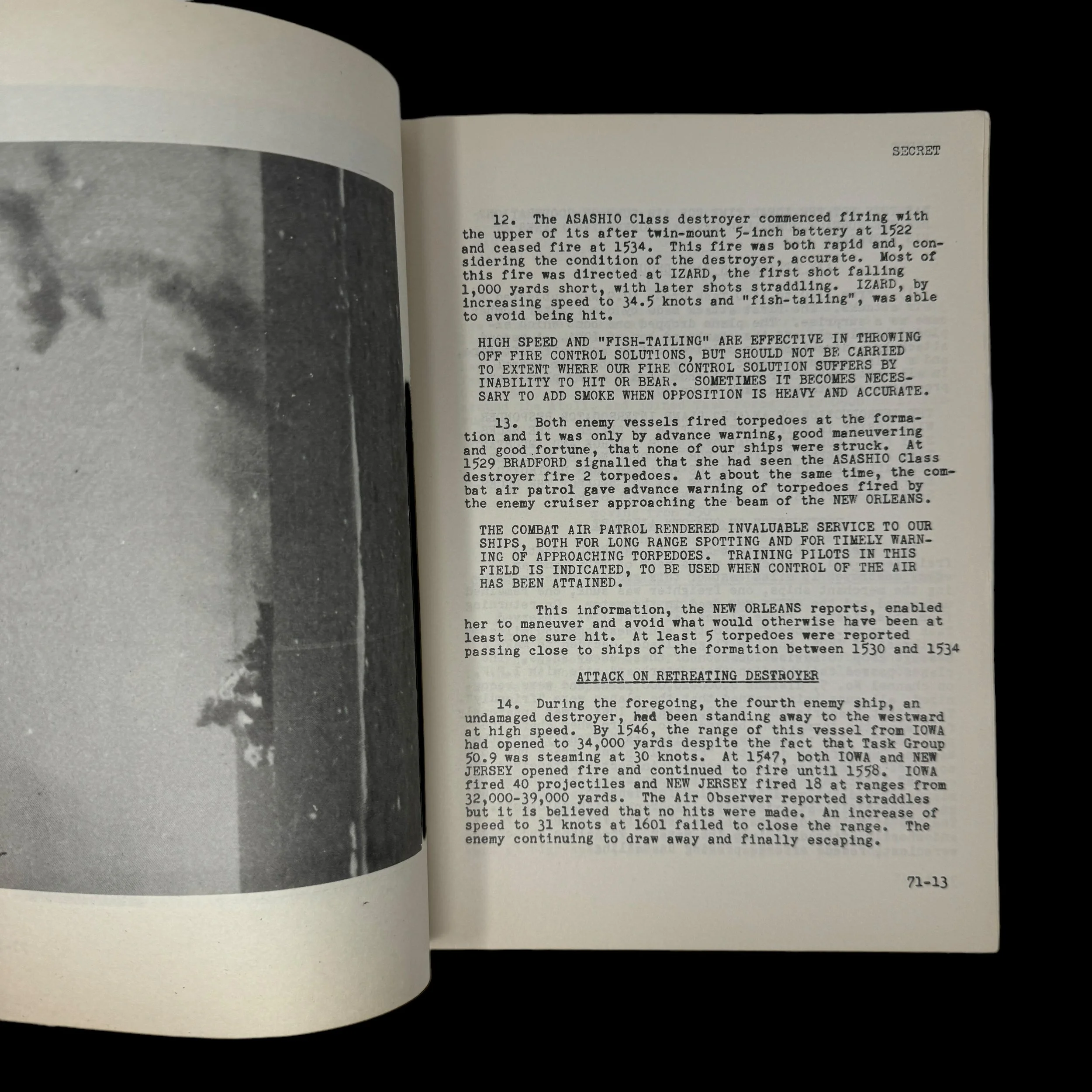
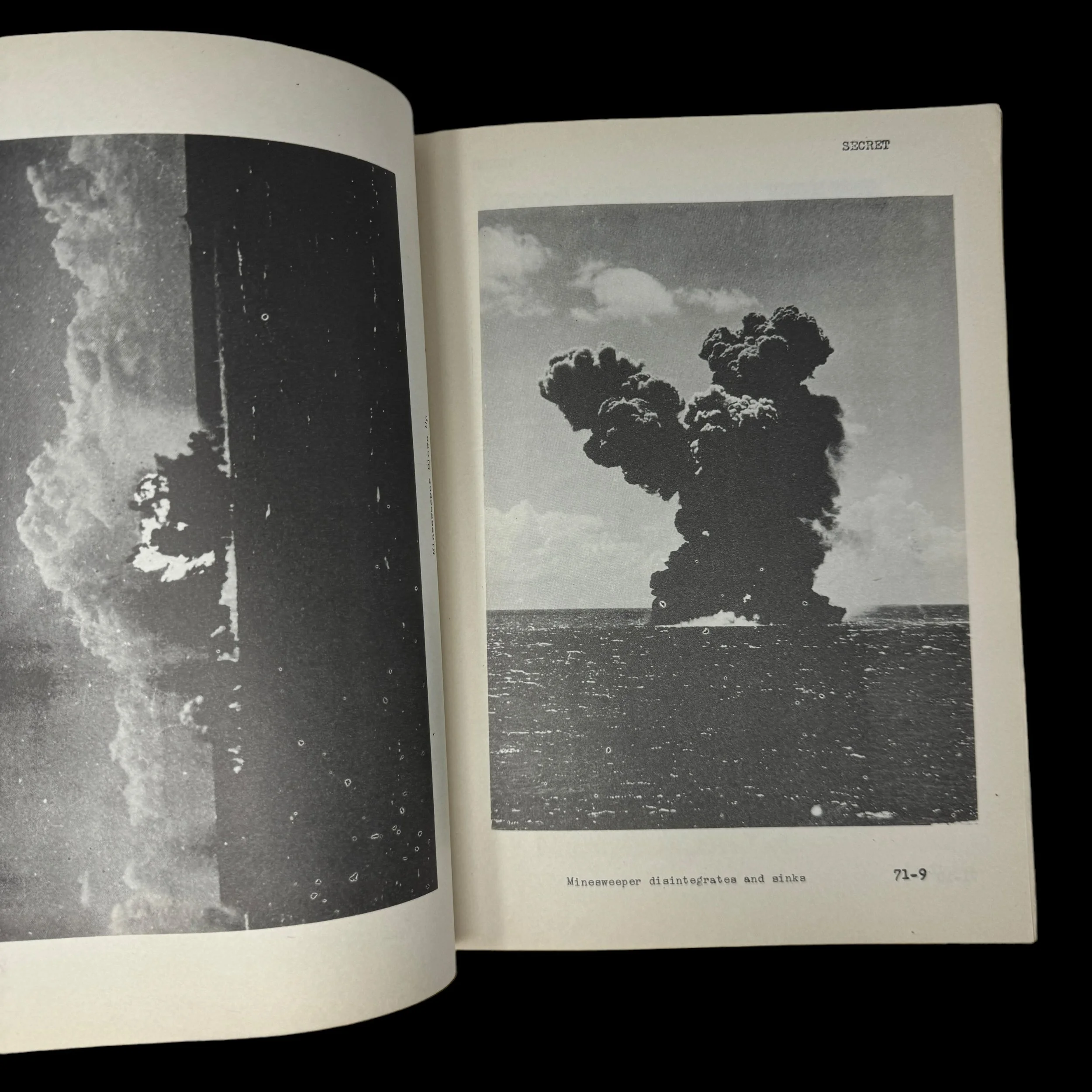


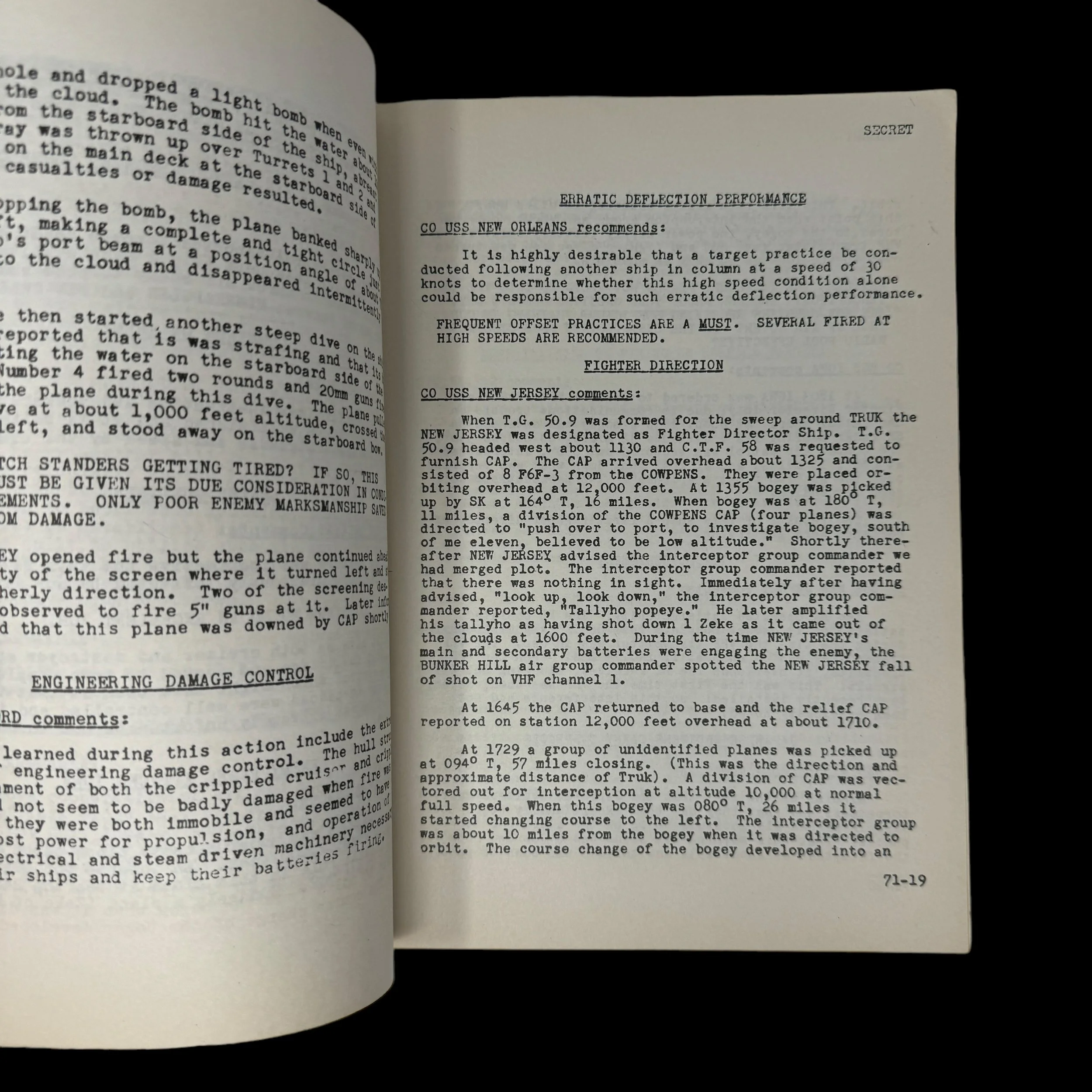
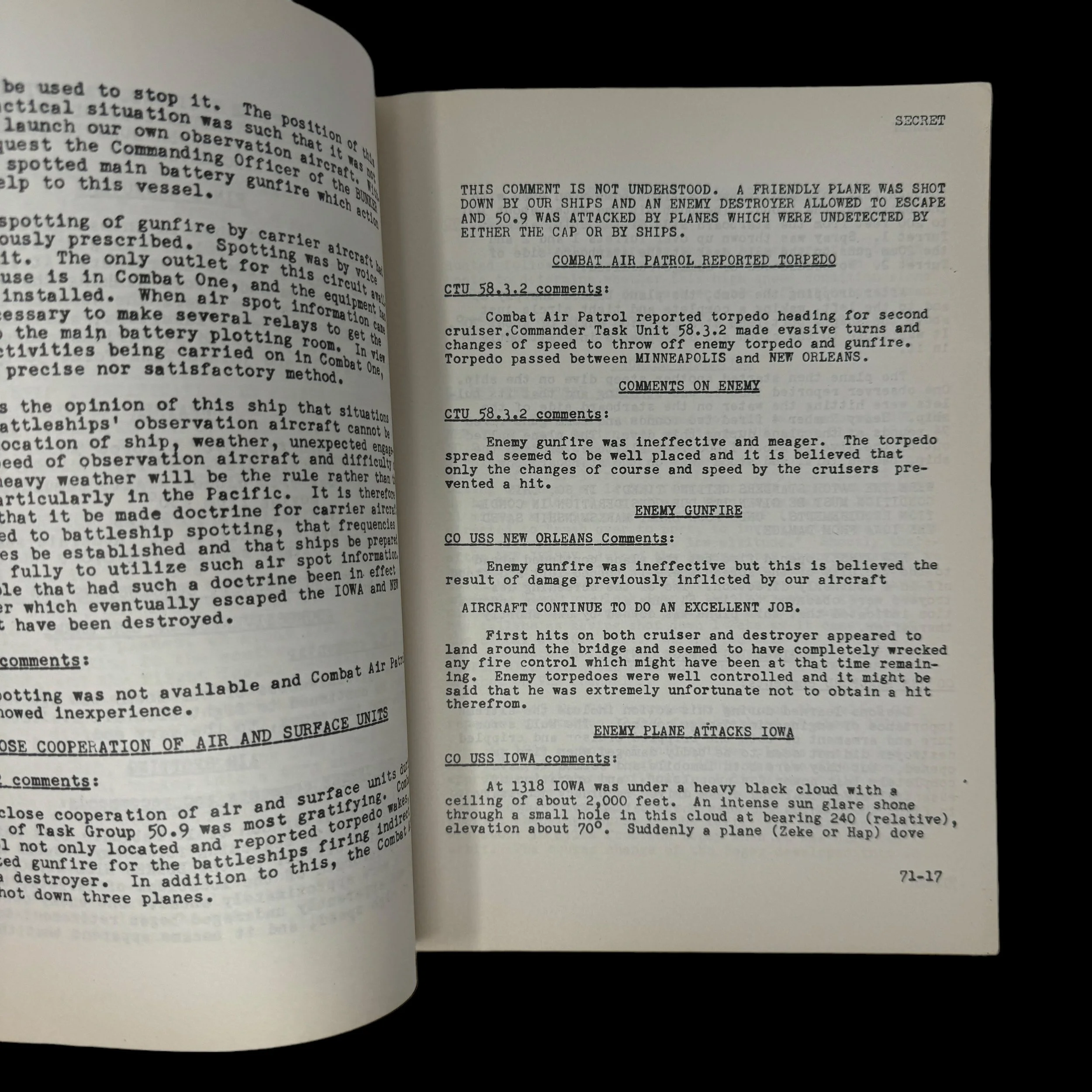
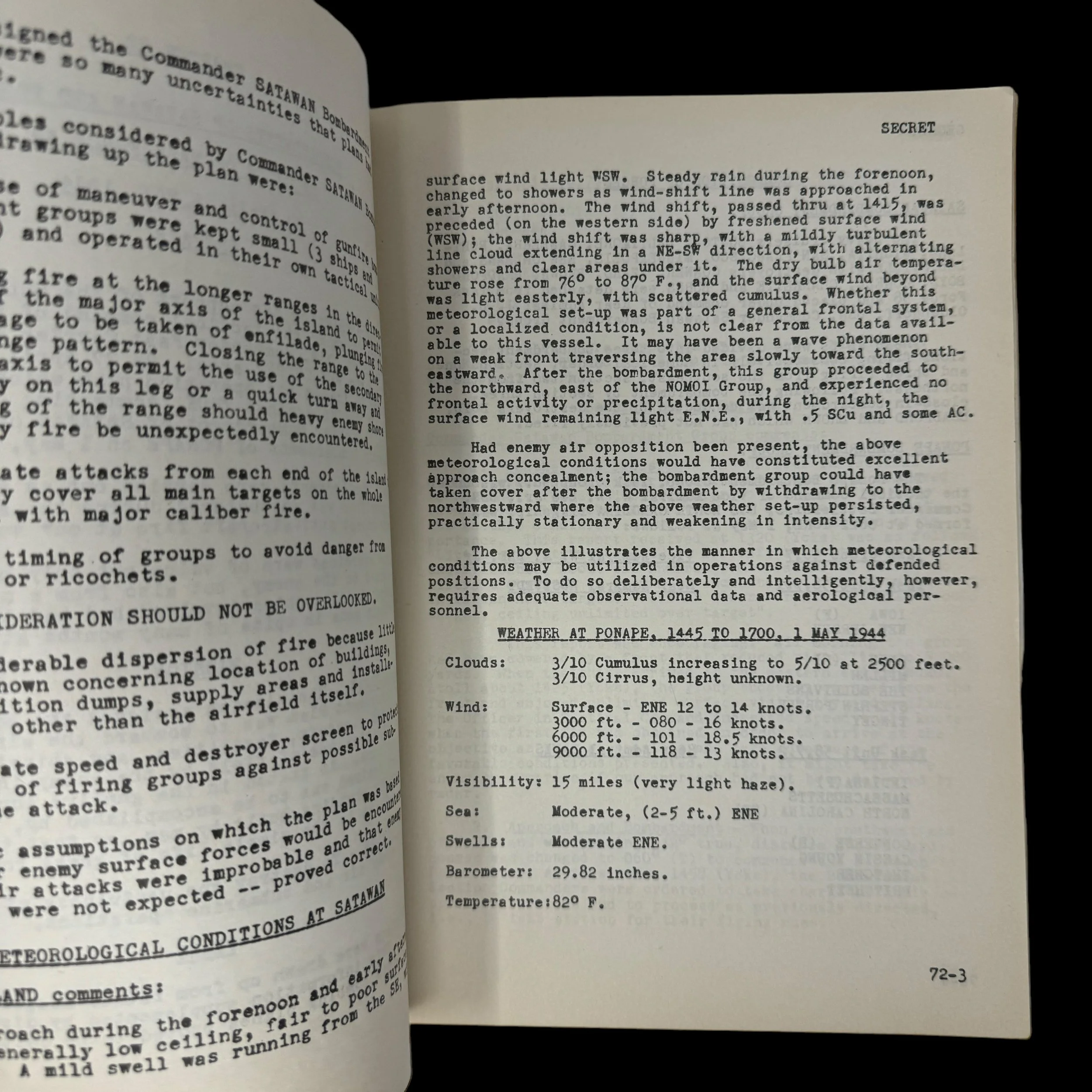


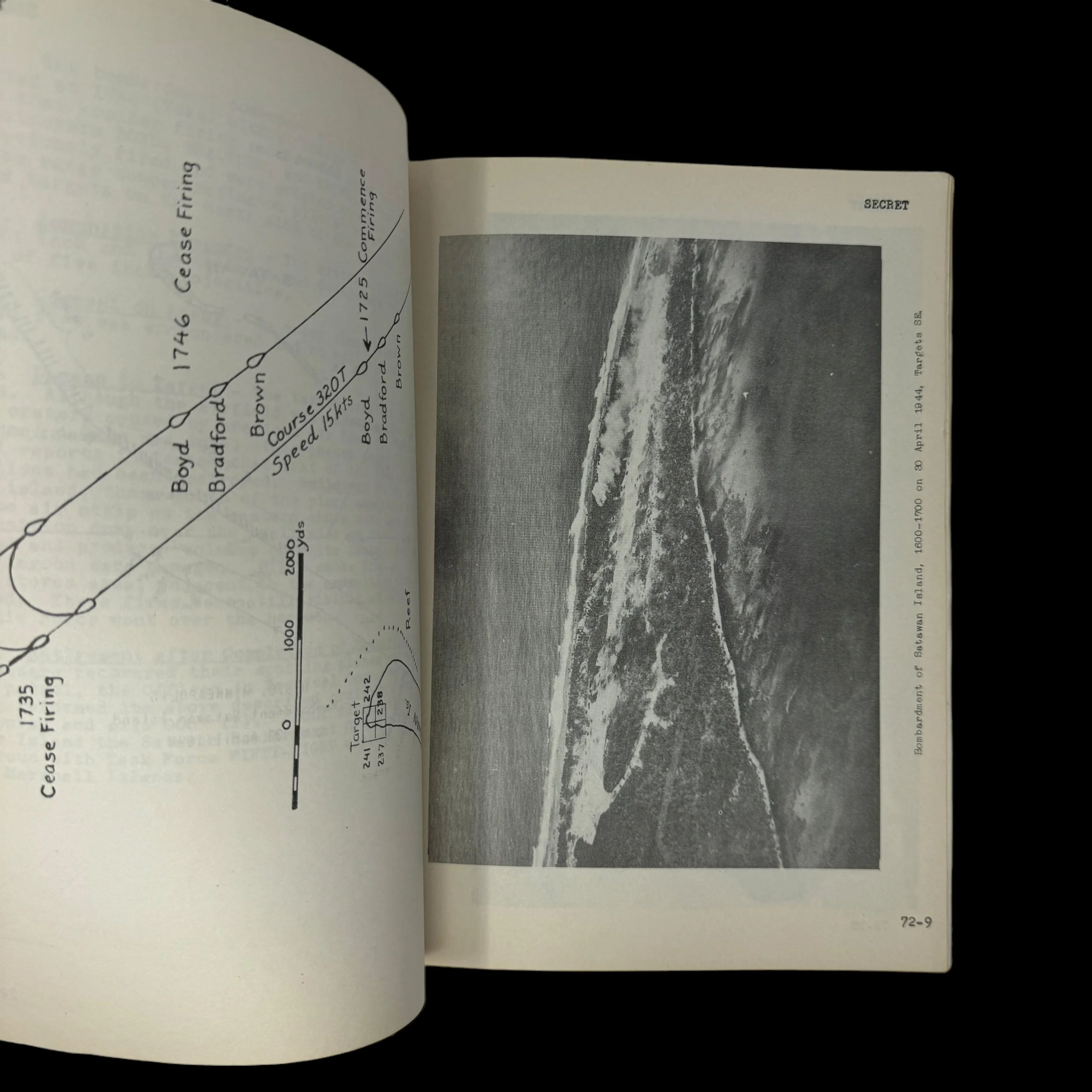

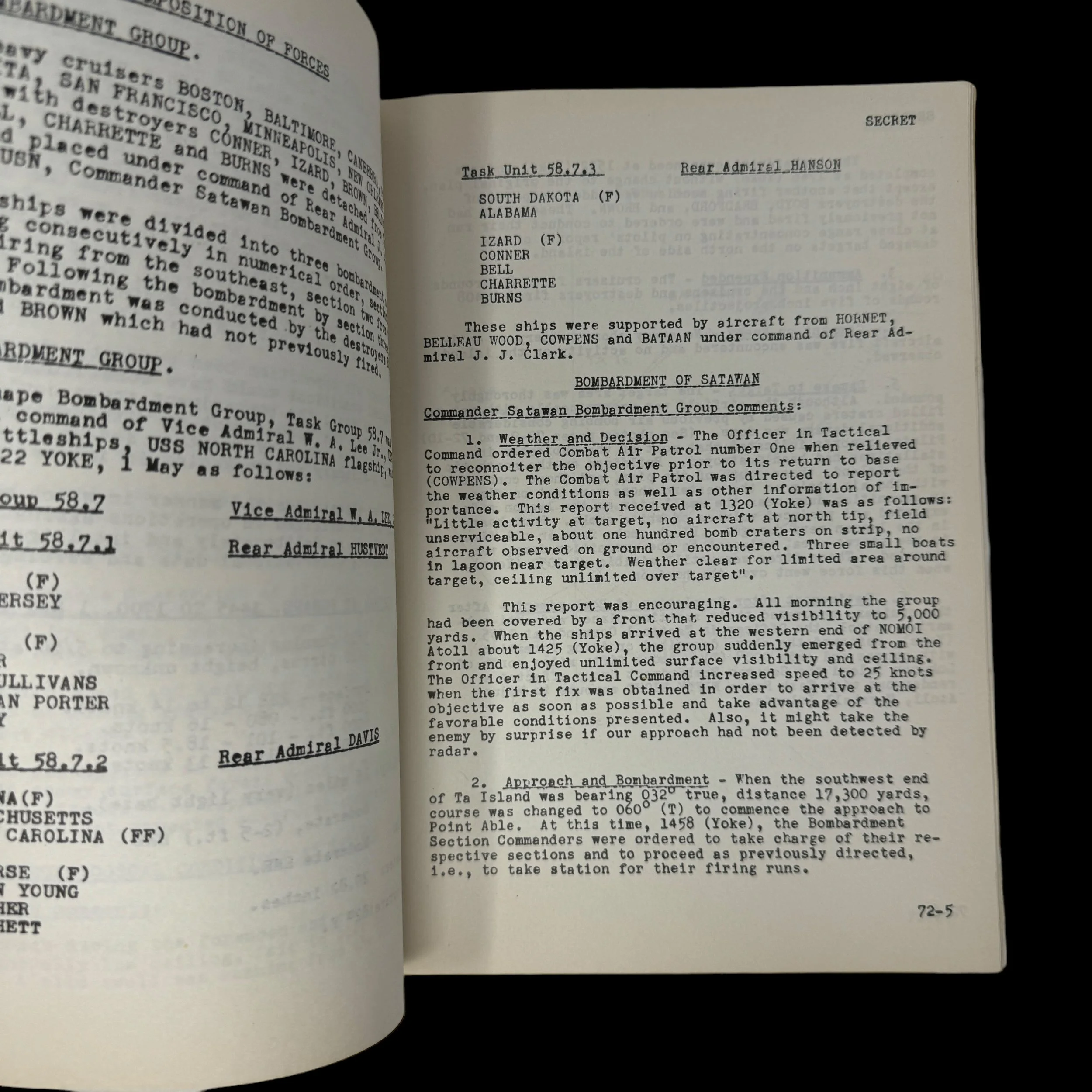
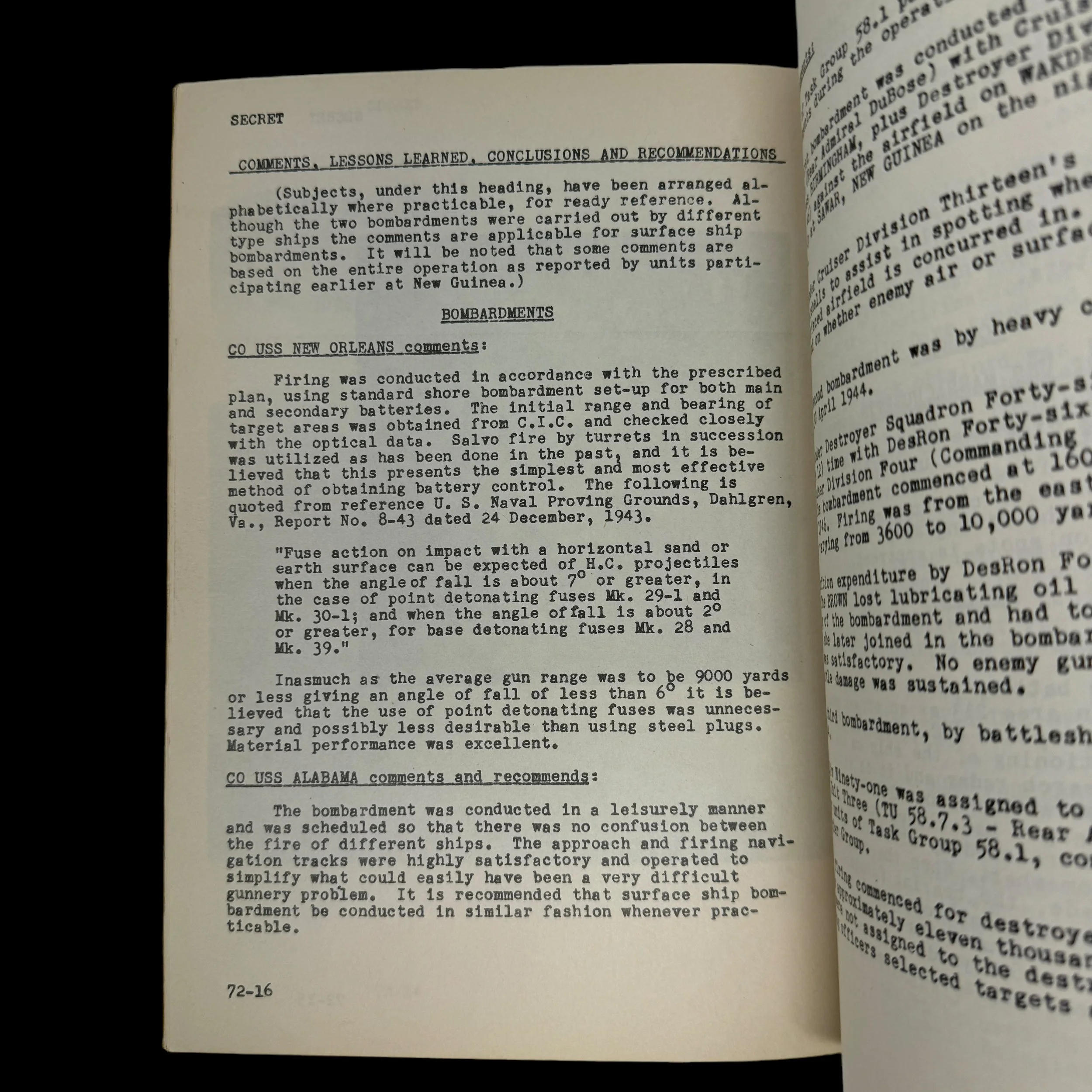
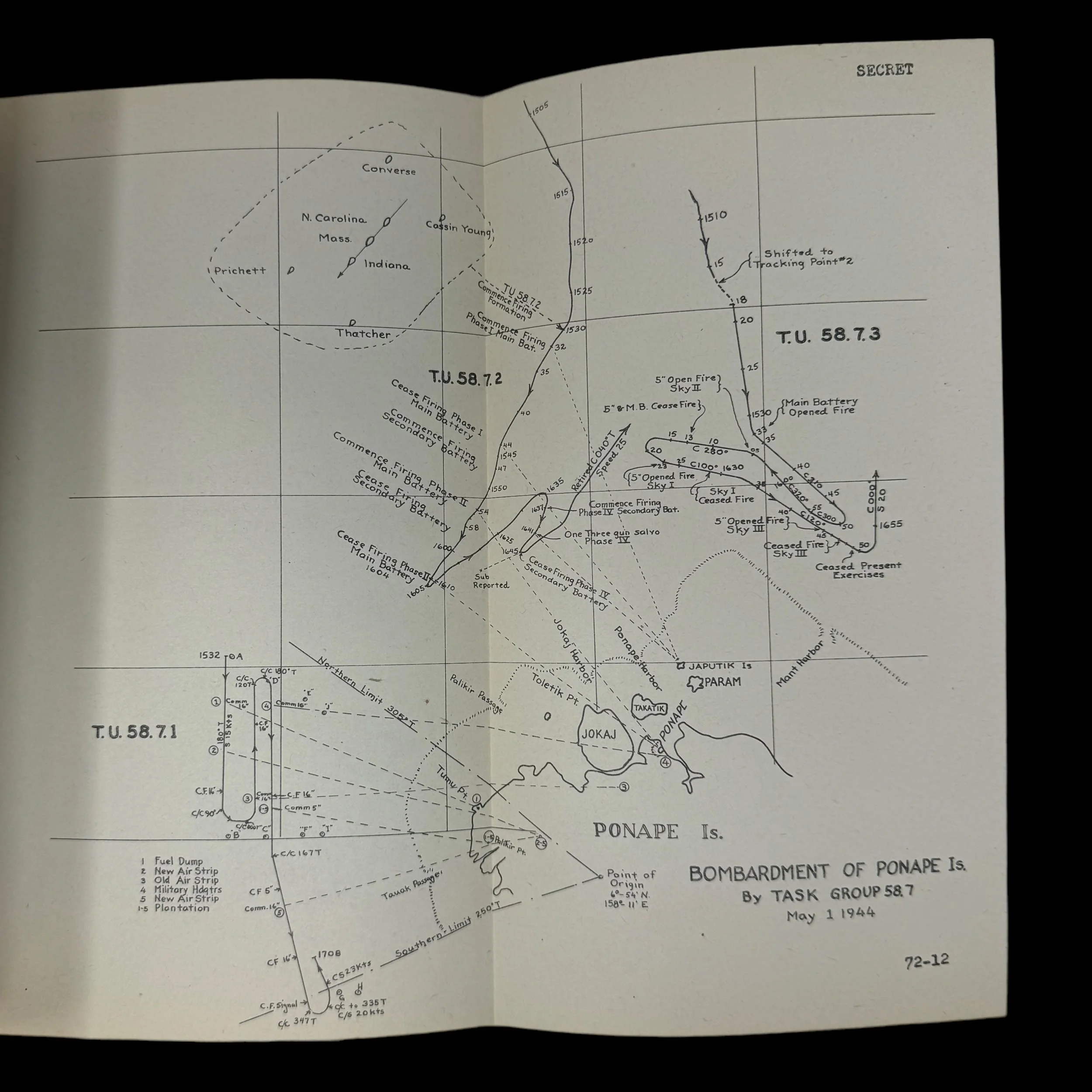
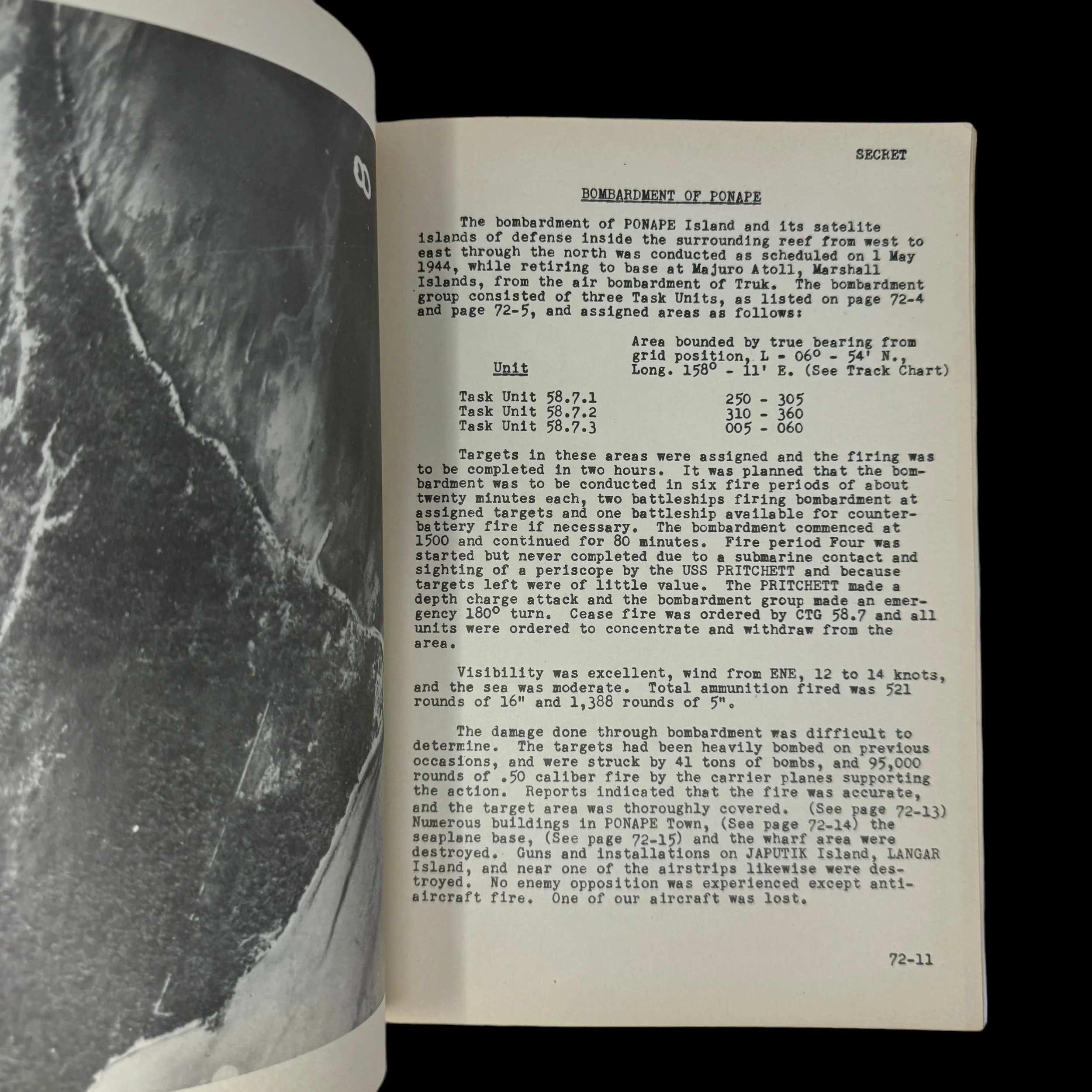


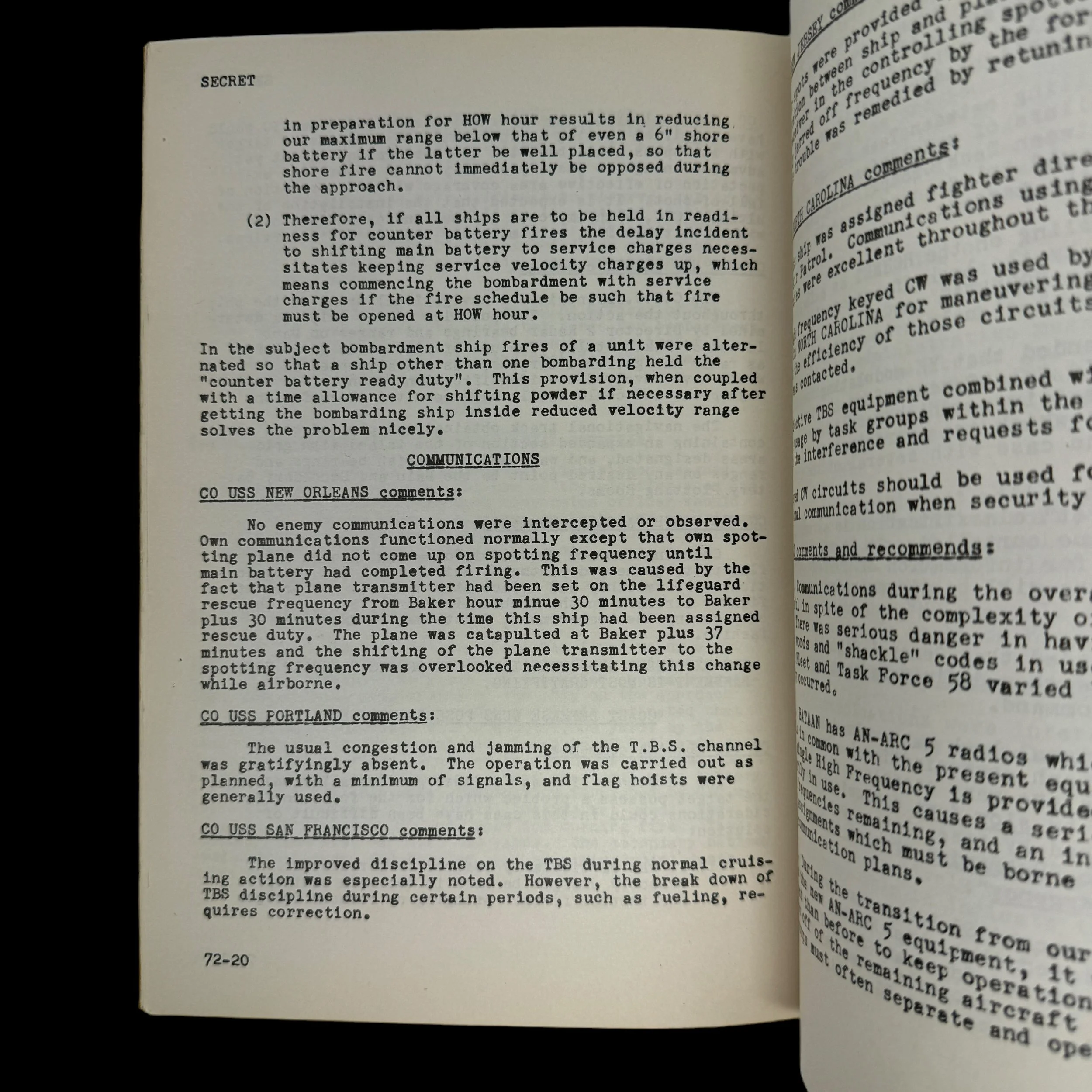
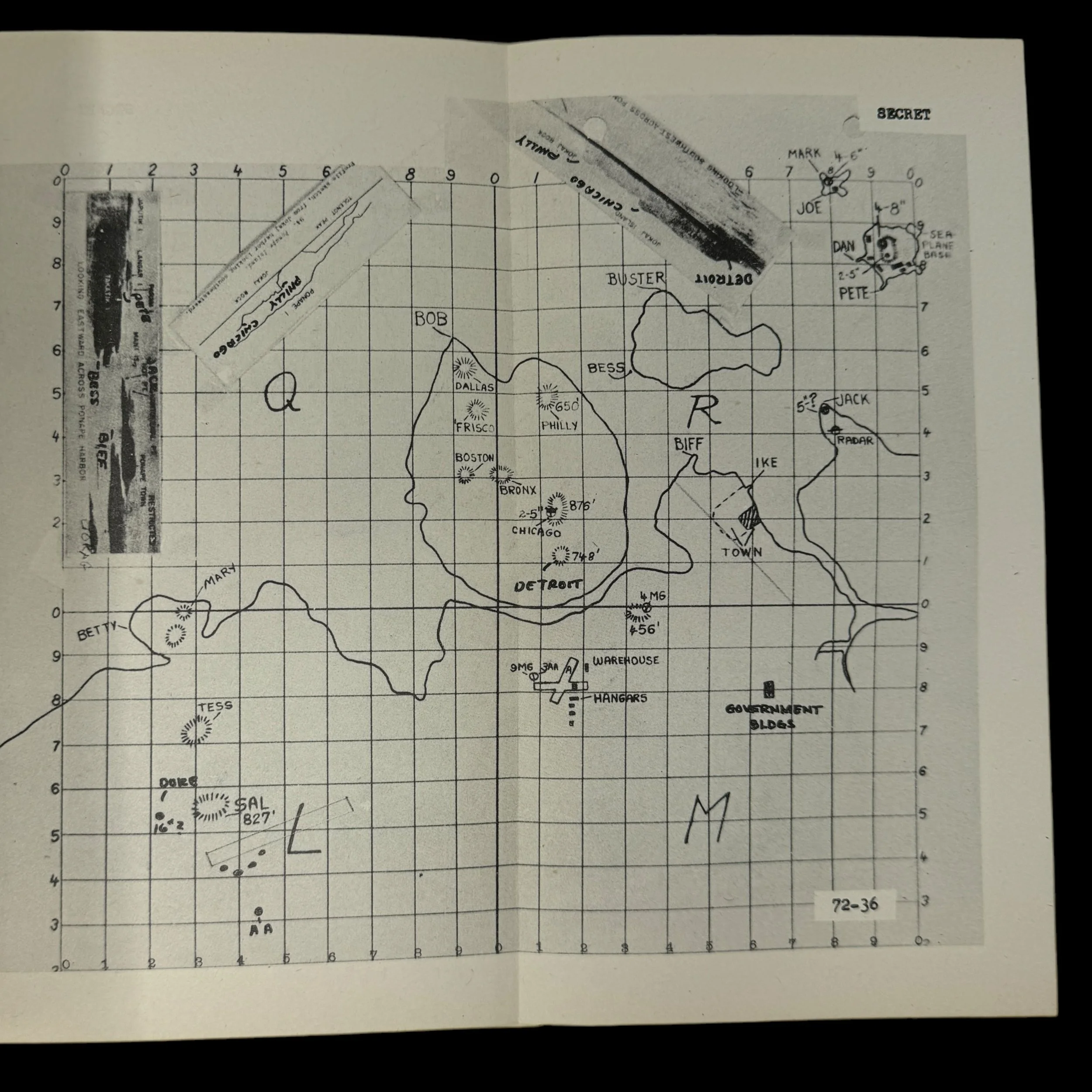
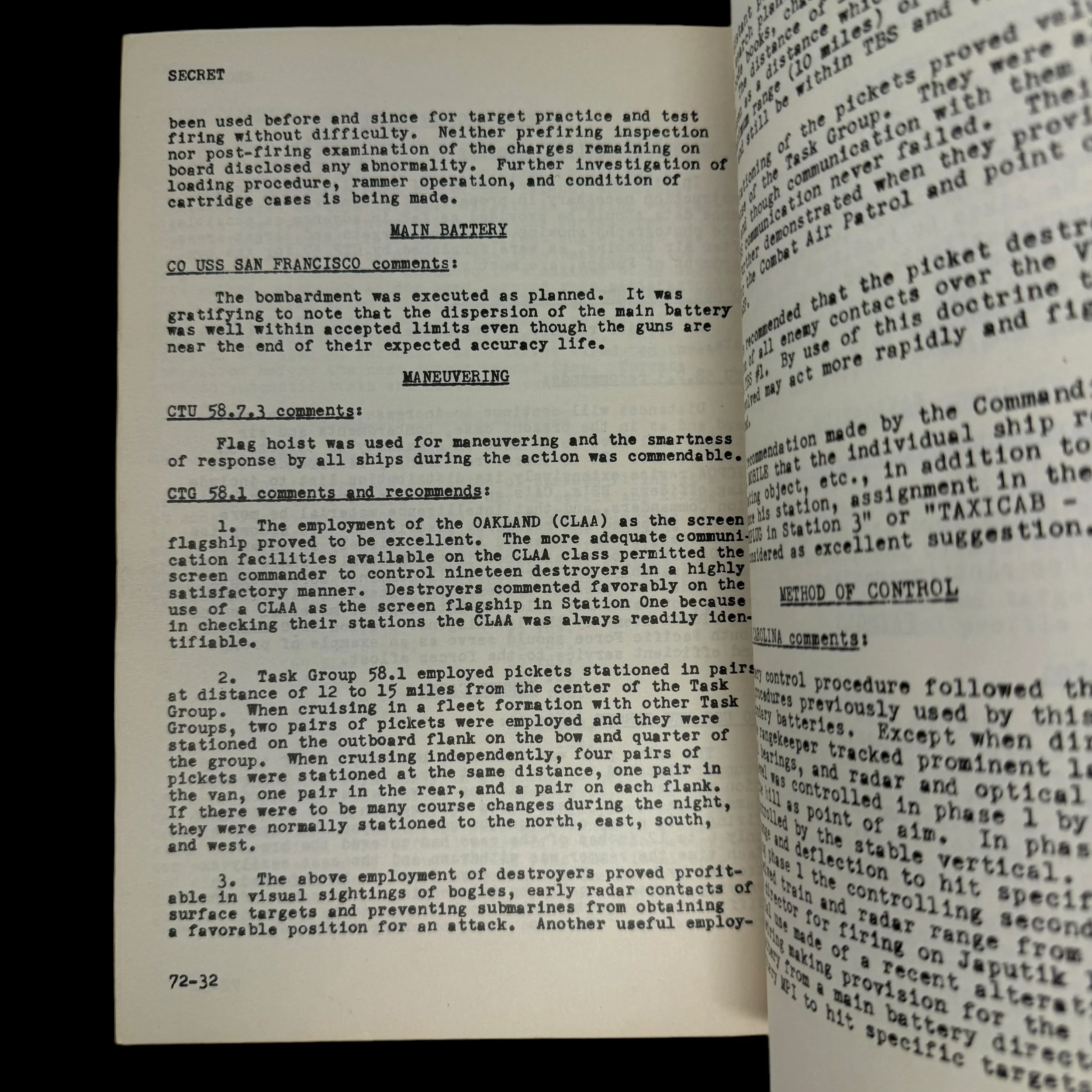
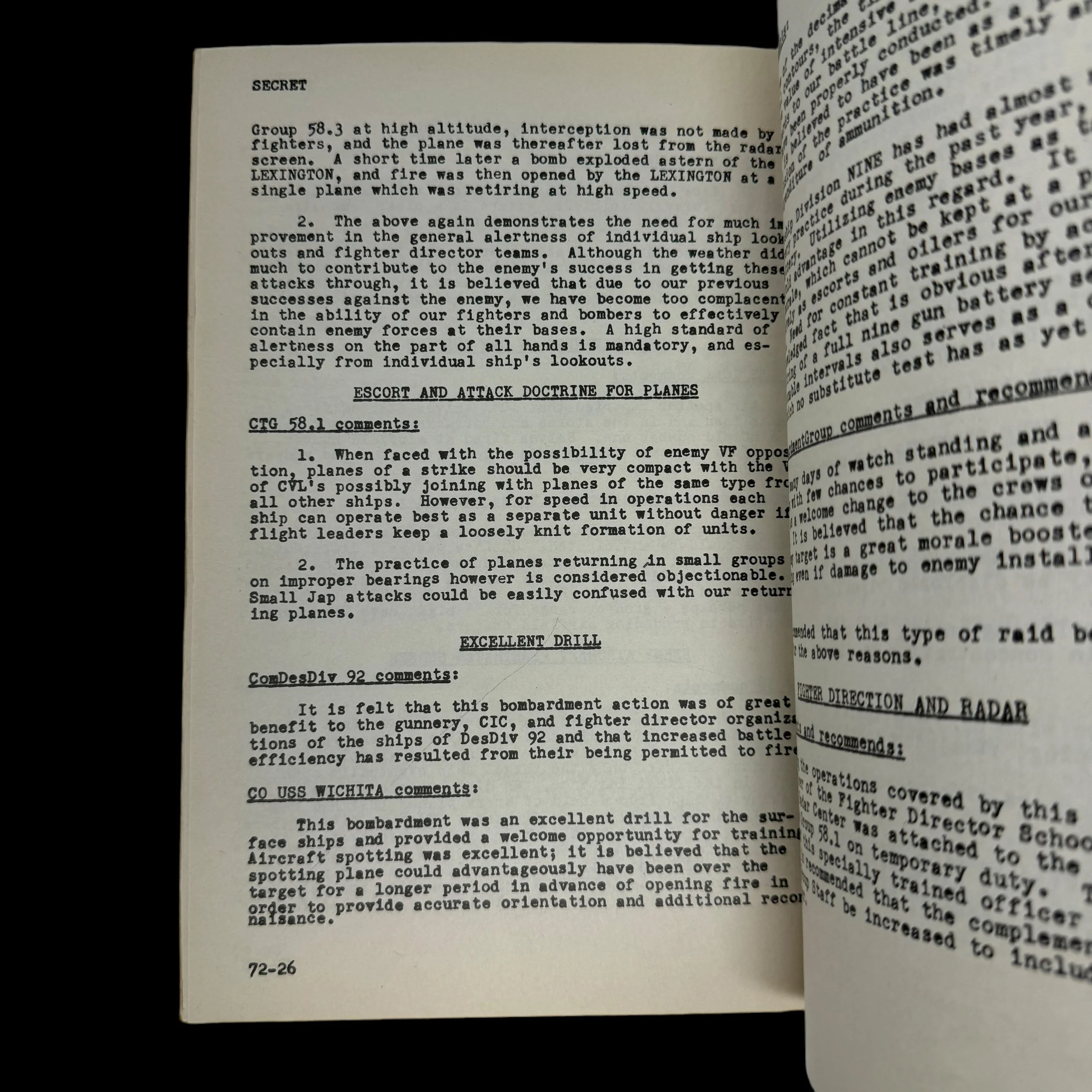
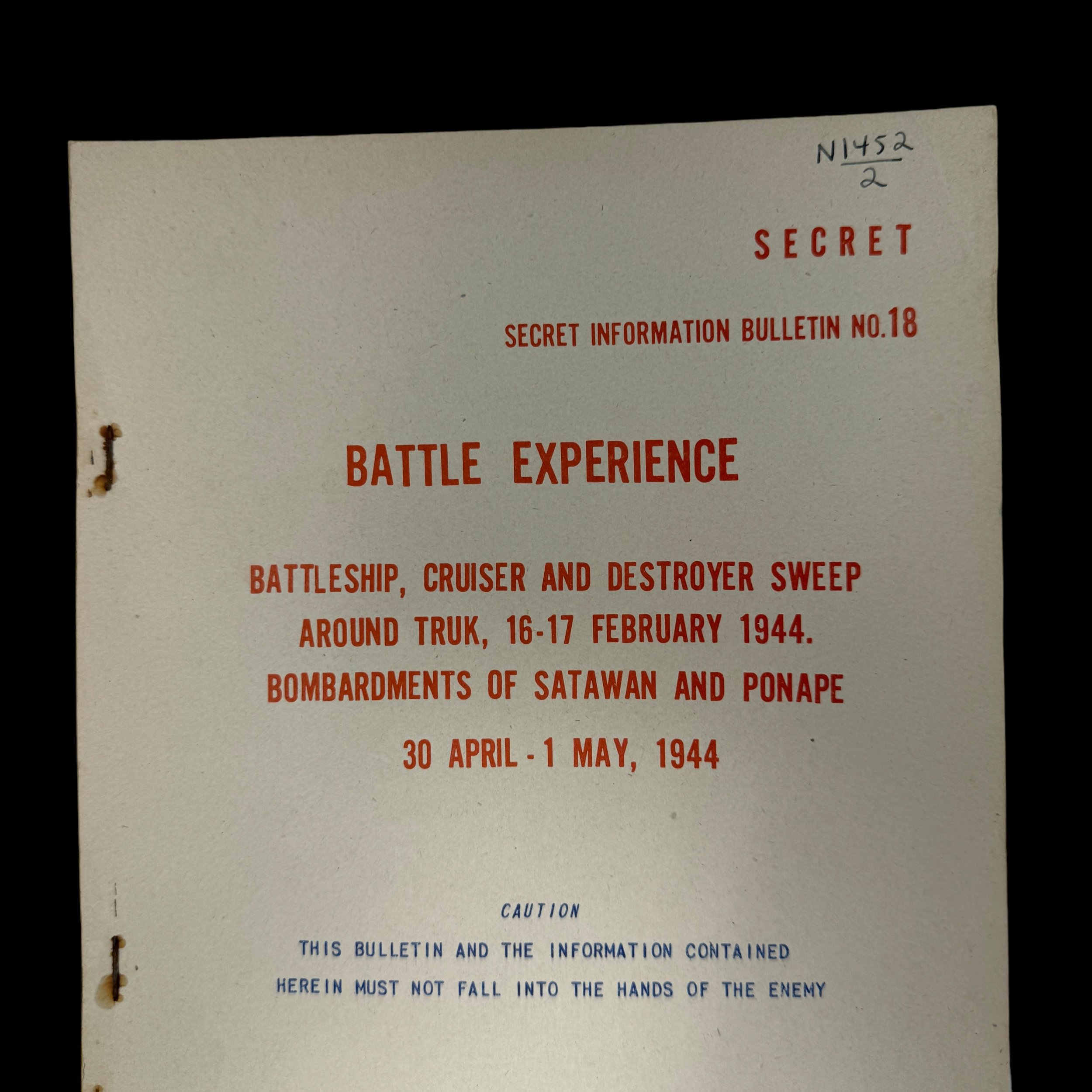
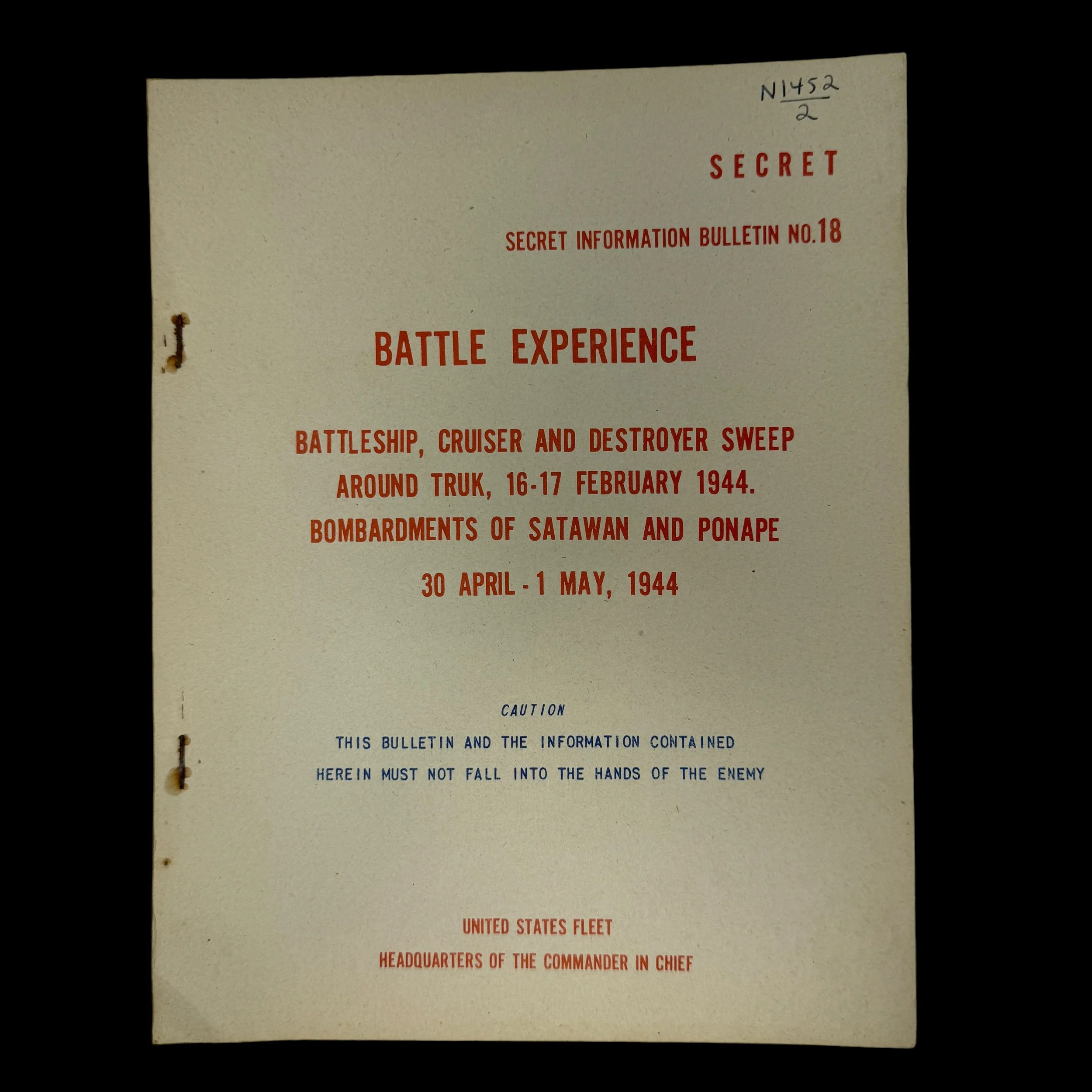
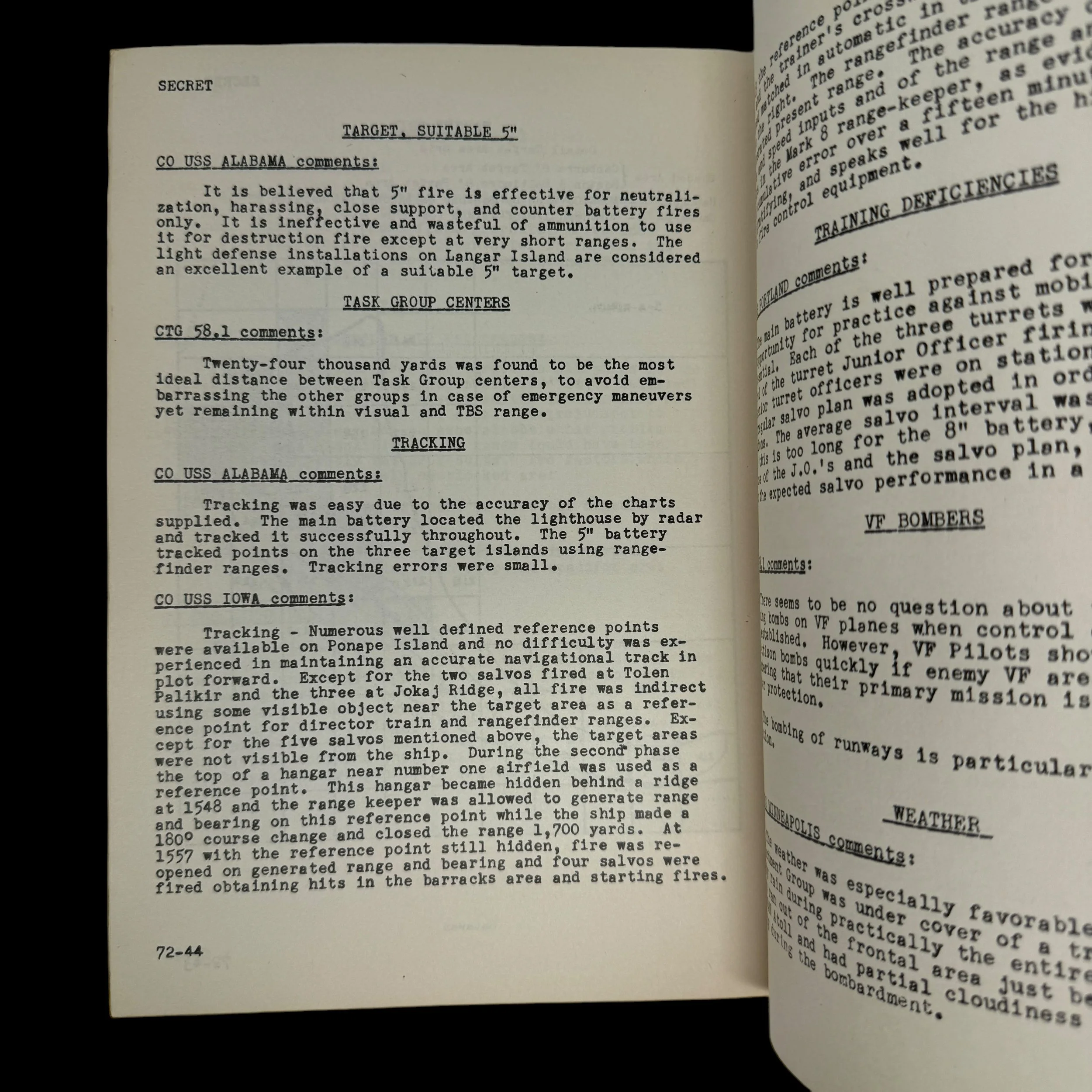
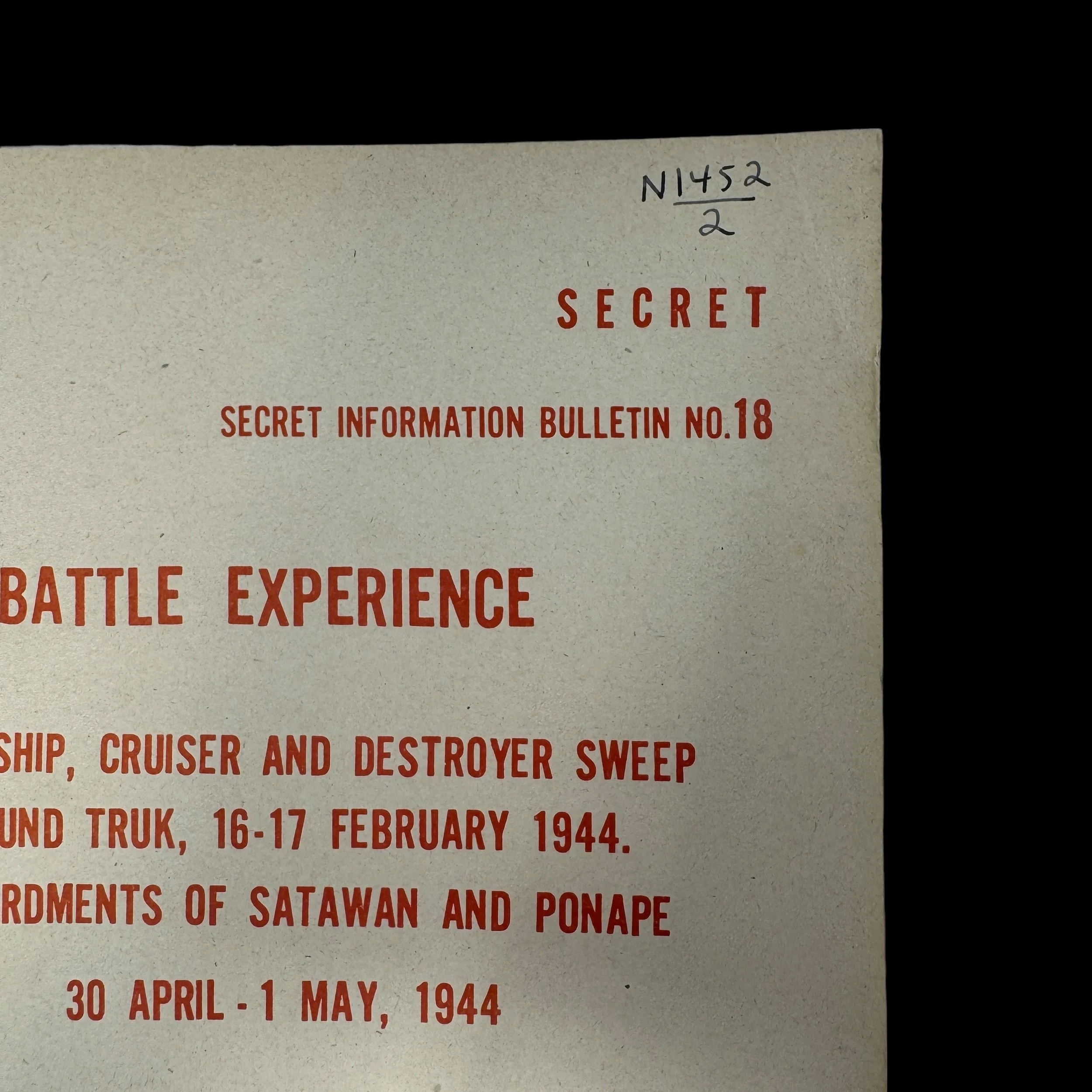

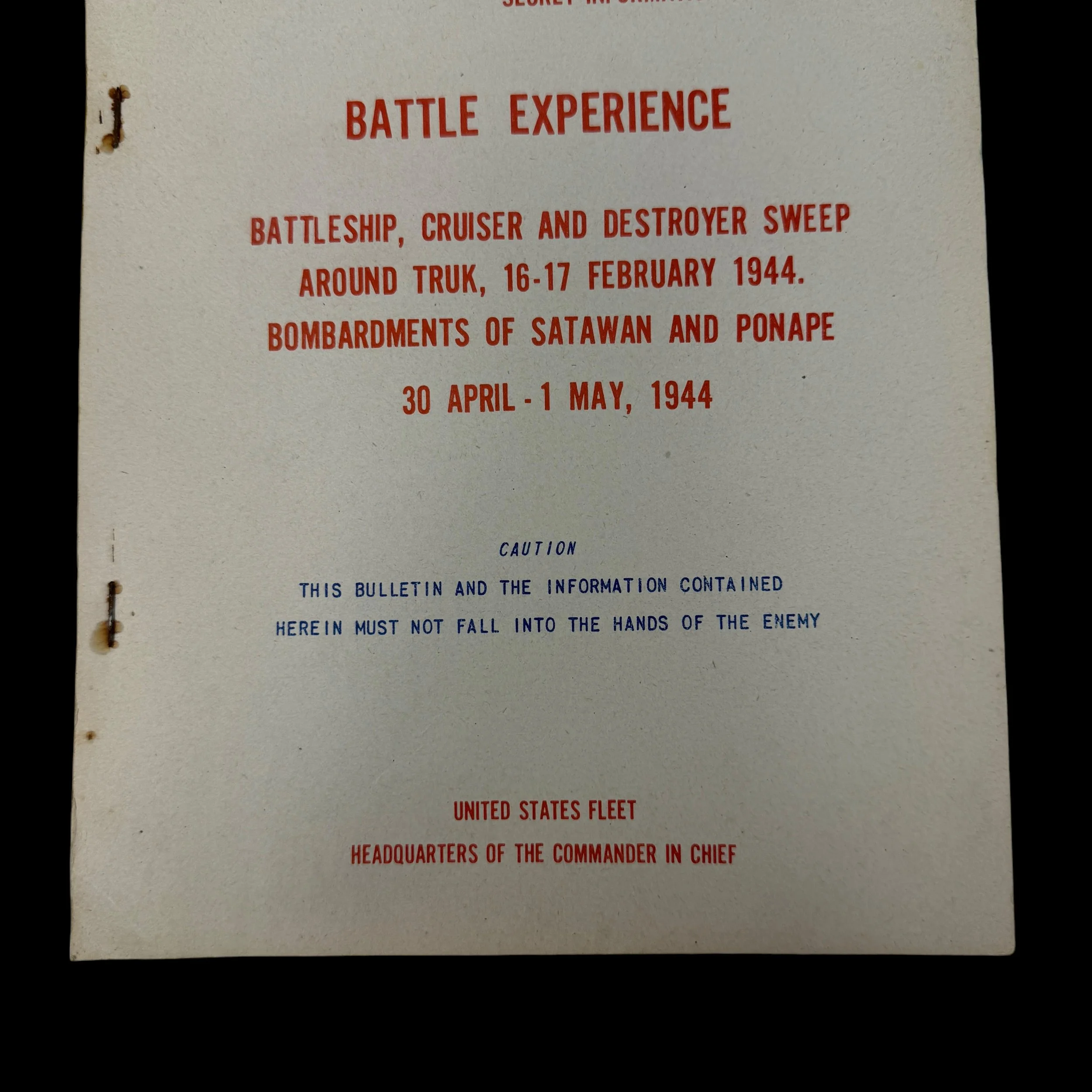
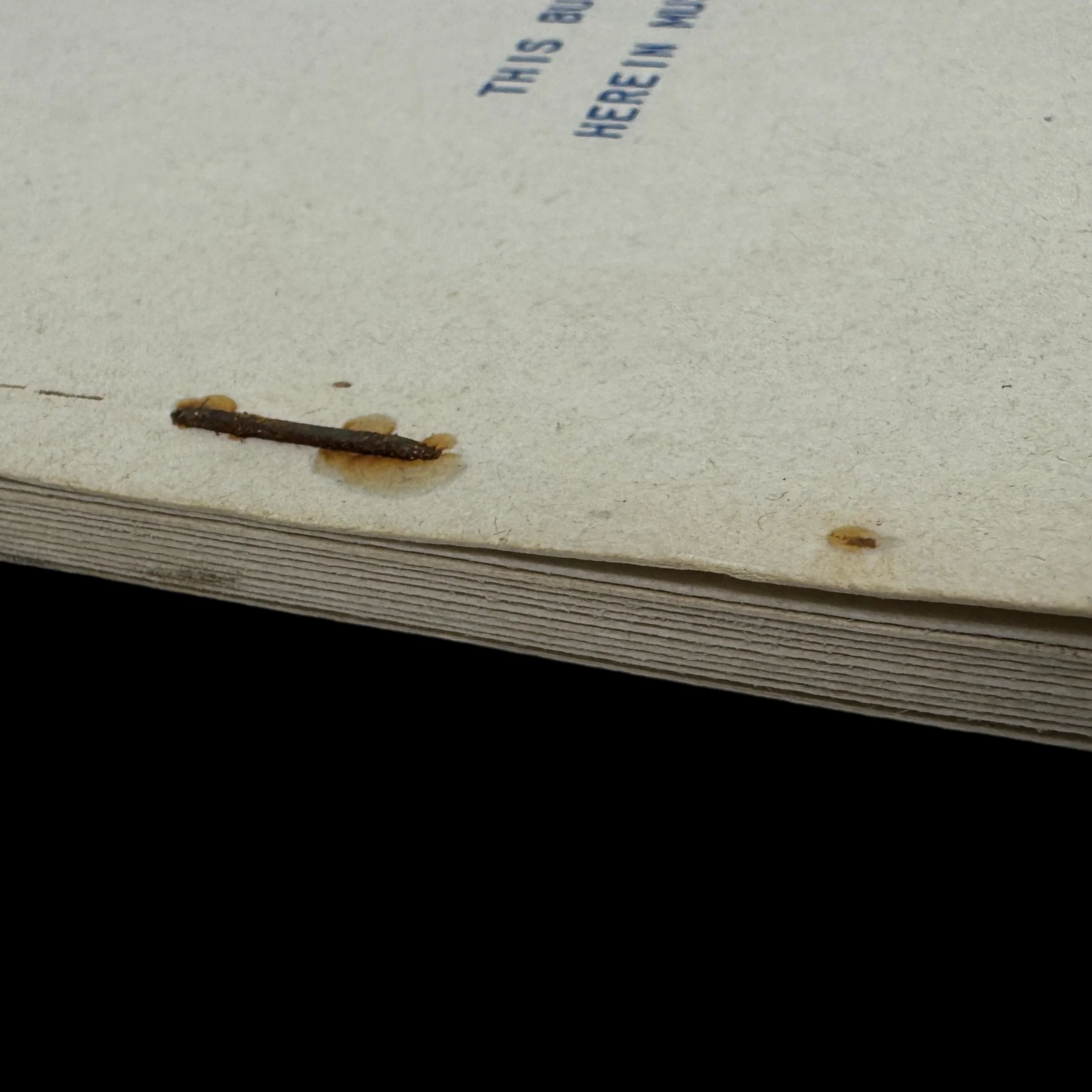
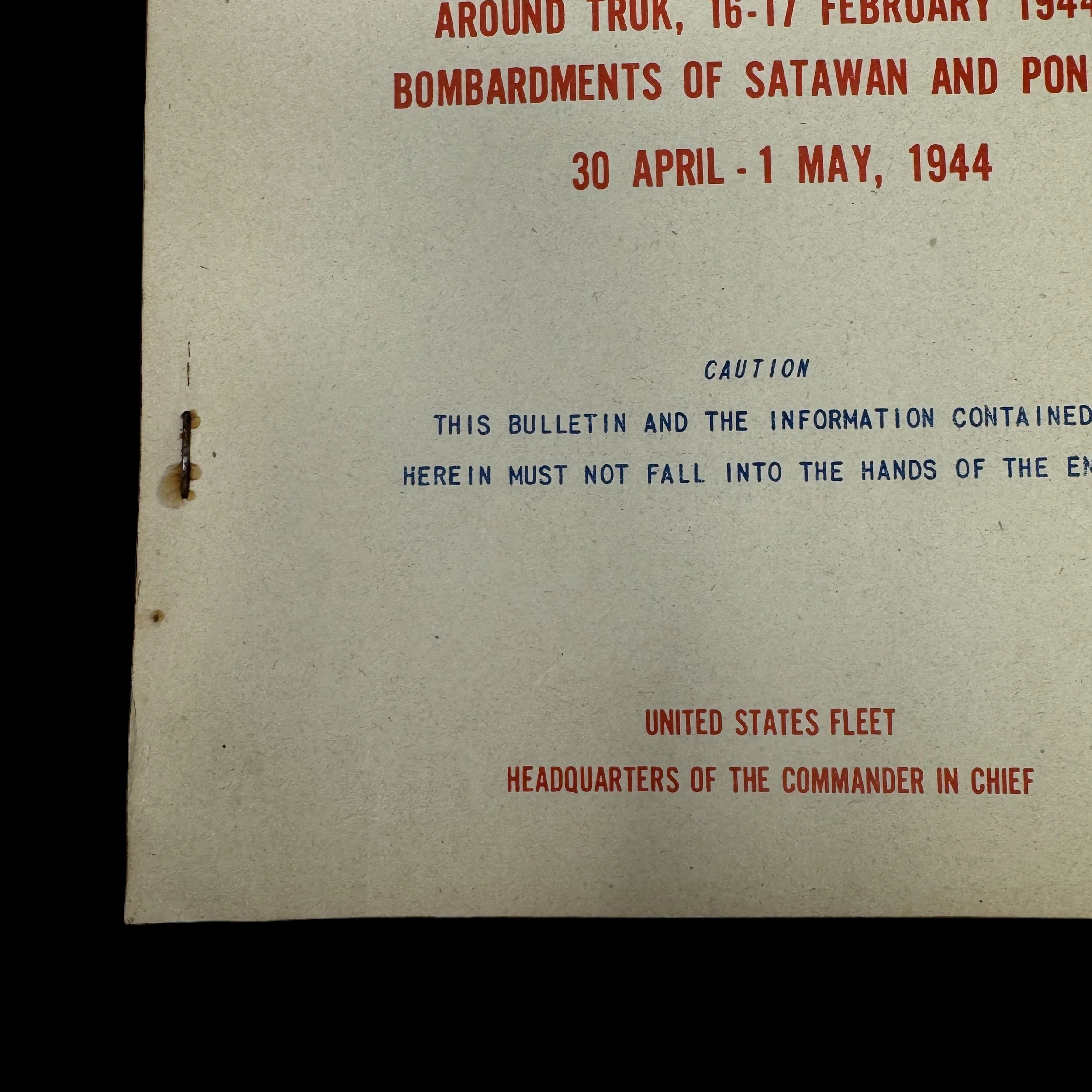
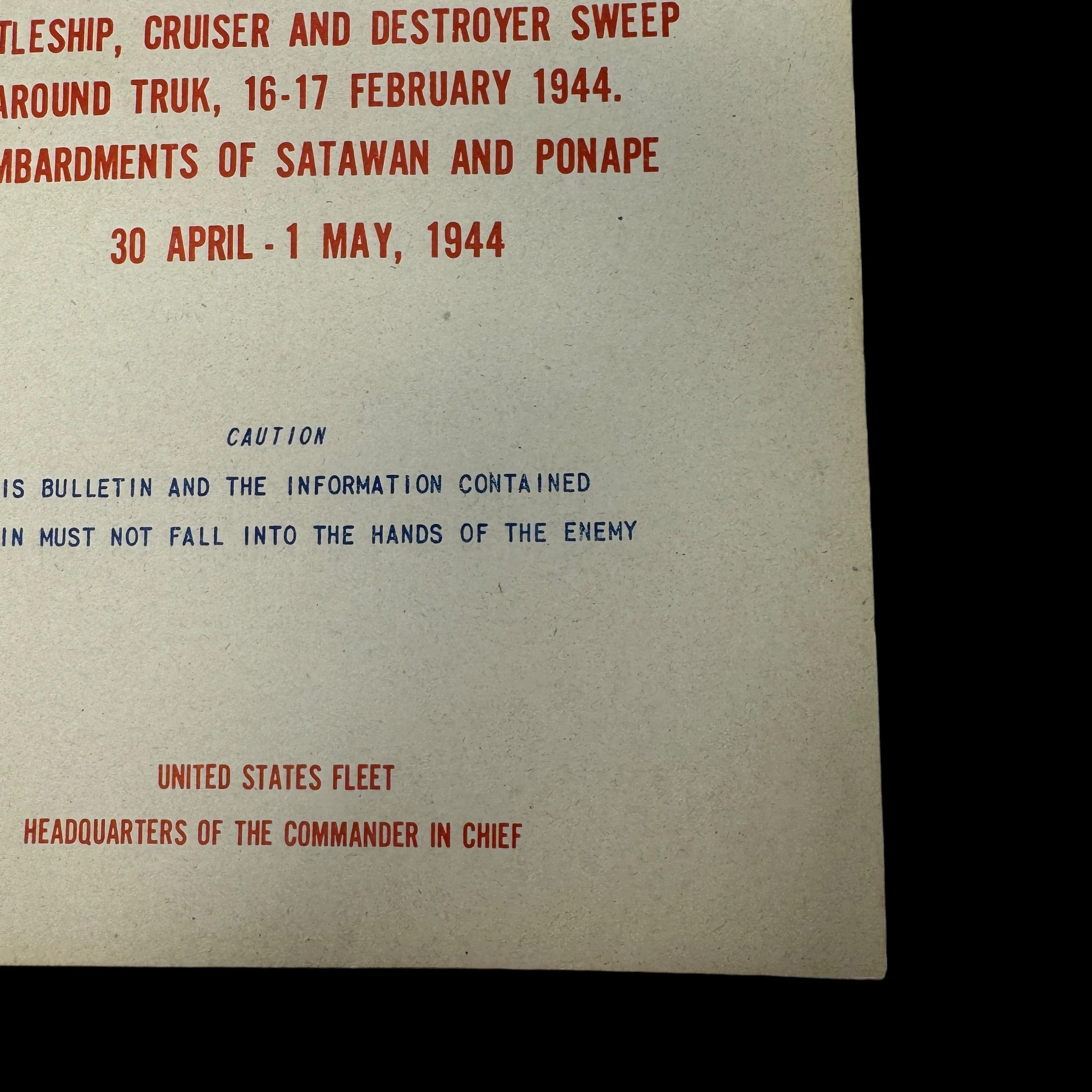
EXTREMELY RARE! WWII SECRET 1944 Truck (Operation Hailstone) & Satawan Ponape Headquarters of the Commander in Chief Military Intelligence Report
Comes with a hand-signed C.O.A.
This extraordinarily rare, museum-grade World War II artifact is an original "SECRET" marked "Battle Experience - Informational Bulletin," meticulously produced by the United States Fleet under the Headquarters of the Commander in Chief. During WWII, the operations and strategic planning of the U.S. Navy were directed by two prominent commanders: Admiral Chester W. Nimitz, Commander in Chief of the United States Pacific Fleet (CINCPAC), and Admiral Ernest J. King, Commander in Chief of the United States Fleet (CINCUS). Their combined leadership played a pivotal role in the Allied victory.
This highly classified and intricately detailed bulletin, issued by the Headquarters of the Commander in Chief, contains secret military maps, intelligence reports, tactical movements, and a unique compilation of "battle experiences." These experiences were drawn from war diaries and battle reports submitted by various commanders and ships engaged in key operations. The bulletin was printed in extremely limited quantities, strictly for the eyes of high-ranking military officials, including Officers and Generals.
The rarity of this document is underscored by the directive on its first page, which states: "Information must not fall into enemy hands - when no longer required they shall be destroyed by burning. No report of destruction need be submitted." As a result, only a handful of these original "SECRET" "Battle Experience - Informational Bulletins" are believed to still exist.
This particular "SECRET INFORMATION BULLETIN NO. 18" is a remarkable example, titled "Battle Experience - Battleship, Cruiser and Destroyer Sweep Around Truck, 16–17 February 1944 & Bombardment of Satawan and Ponape 30 April – 1 May, 1944." It offers an unparalleled glimpse into the strategic operations and experiences of the United States Navy during some of the most crucial campaigns of the Pacific Theater.
Battleship, Cruiser and Destroyer Sweep Around Truck, 16–17 February 1944:
The Battleship, Cruiser, and Destroyer Sweep around Truk, known as Operation Hailstone, on 16–17 February 1944, was a pivotal naval assault by the United States against the Japanese stronghold at Truk Lagoon in the Pacific Theater of World War II. This meticulously planned operation, led by Vice Admiral Marc Mitscher's Task Force 58, involved a coordinated attack of air, surface, and submarine forces, resulting in the destruction of over 40 Japanese ships and nearly 300 aircraft. Truk, a critical Japanese naval base, was effectively neutralized, crippling Japan's ability to project naval power and forcing a strategic withdrawal of remaining assets. The success of Operation Hailstone marked a significant shift in the balance of naval power in the Pacific, accelerating the Allied advance toward Japan and demonstrating the growing dominance of U.S. naval forces in the region.
Bombardment of Satawan and Ponape 30 April – 1 May, 1944:
The bombardments of Satawan and Ponape on 30 April and 1 May 1944 were pivotal operations in the Pacific Theater of WWII, showcasing the U.S. Navy's strategic approach of combined air and naval power to neutralize Japanese strongholds. These bombardments, part of the broader Allied strategy to weaken Japan's defensive perimeter, successfully destroyed key airfields, supply depots, and fortifications, crippling Japan’s ability to launch counterattacks in the region. The operations not only paved the way for the subsequent Mariana Islands invasion but also highlighted Japan's growing vulnerability, marking a significant step in the Allies' advance toward the Japanese home islands and contributing to the eventual collapse of Japan's Pacific defense strategy.